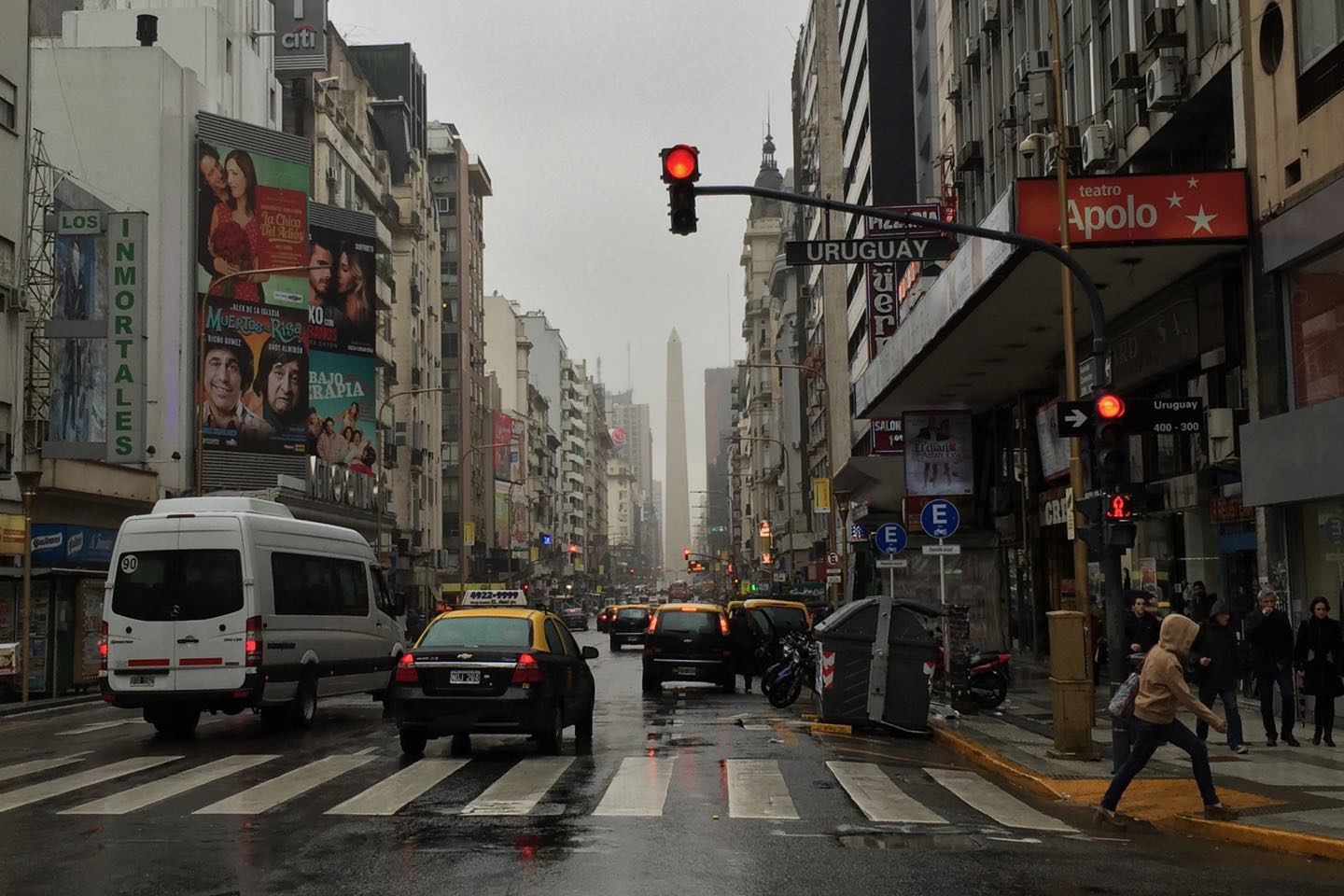Buenos Aires is a very beautiful city with lot to offer. It is best visited walking around and the secret is to plan the route linking areas defined by a specific attraction, instead of doing it by neighborhood. Here there are also plenty of museums, the famous tango, endless number of local food with the unmatched argentinian beef, the “asado” -grilled meat- as well as some of the best wines in the world at a ridiculously cheap price.
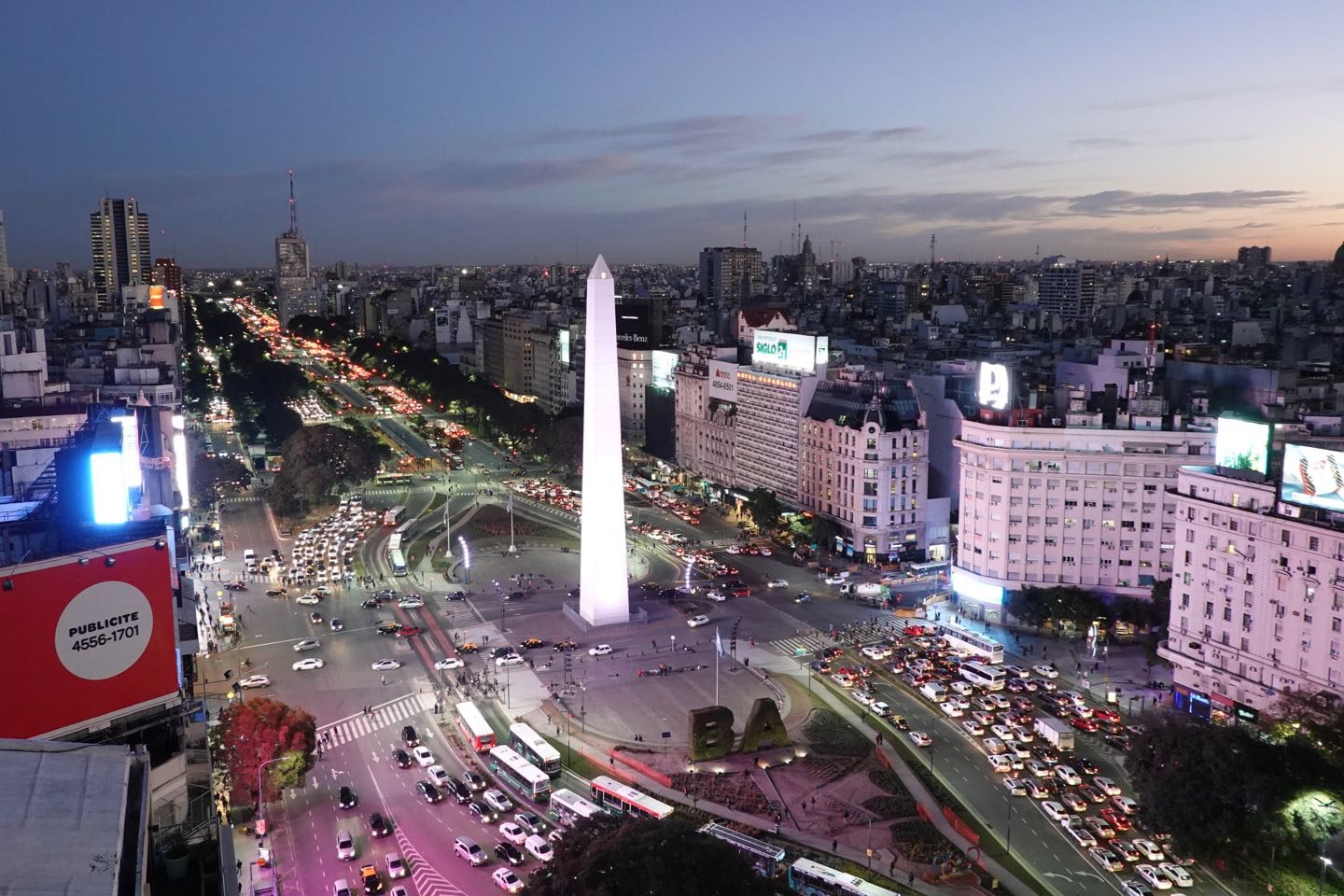
Index
Overview
Must do in Buenos Aires:
- the Obelisco, San Telmo, La Boca (Caminito), Recoleta (cemetery and around)
- dinner and drinks in Palermo
- tango in the streets of San Telmo or La Boca
- try alfajores, empanadas, beef in a parrilla and Malbec wine
Buenos Aires neighbourhoods:
- Downtown: buildings and landmarks of the country. Business and politics area.
- Retiro: part of downtown. Many palaces and embassies, European style.
- Recoleta: residencial and comercial upscaled neighbourhood.
- Puerto Madero: new luxury area, modern style, not very special as the rest.
- San Telmo: old colonial style.
- La Boca: lively and colorful immigrant town.
- Palermo: parks and nightlife with infinite numbers of pubs and restaurants.
How many days?
- two full days is the minimum but not recommended
- four days is enough
- one week if you don’t want to rush
When to come?
- spring (Sep-Dec) is the best season, lovely weather specially for walking in the parks.
- summer (Dec-Mar) extremely hot and humid, buildings gets like the rock in the sauna. It’s also the storm season but it is still the top season for most international tourist. Take into account that Patagonia is visited in summer.
- fall (Mar-Jun) second best season, nice weather but people start to wear more than just a T-shirt.
- winter (Jun-Sep) not so cold, 0℃ low but it’s so humid you can feel the cold in your bones.
Downtown
Downtown is the place where most of the landmarks are. It is subdivided into the following areas: Obelisco, Plaza de Mayo, Congreso, Tribunales, Microcentro y Retiro.
Obelisco
The Obelisco is one of the mayor attractions in town, if you could only chose one picture for a postcard, this would be it. It’s located on 9 de Julio avenue, one of the most important roads in the city and famous for its 140 meters wide. The best way to take a look at this road is by car when you arrive to the city or from a tall building. On the back you can see the Mural Evita.
Mural de Evita is a few blocks away, it can be seen along with the Obelisco on the background.
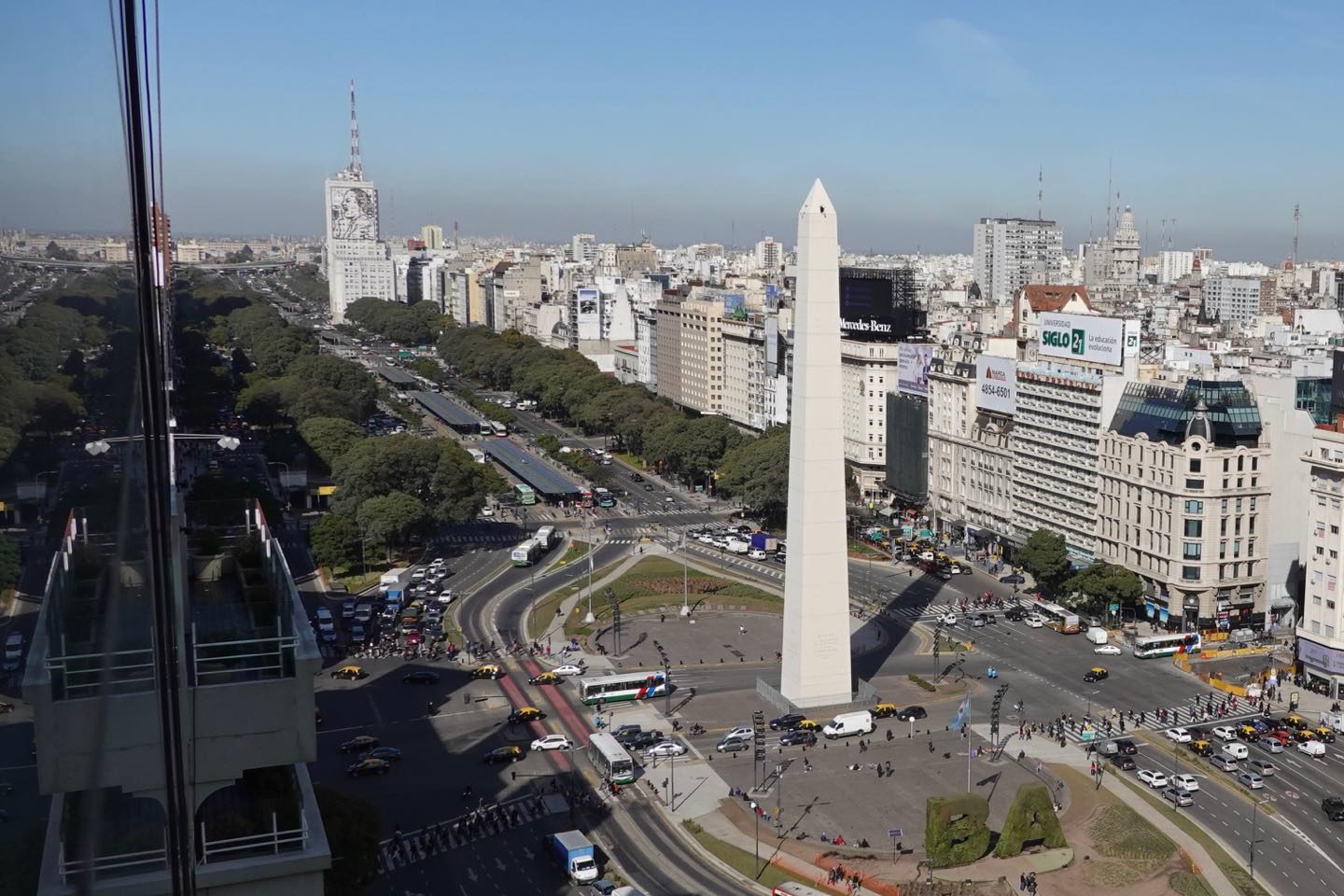
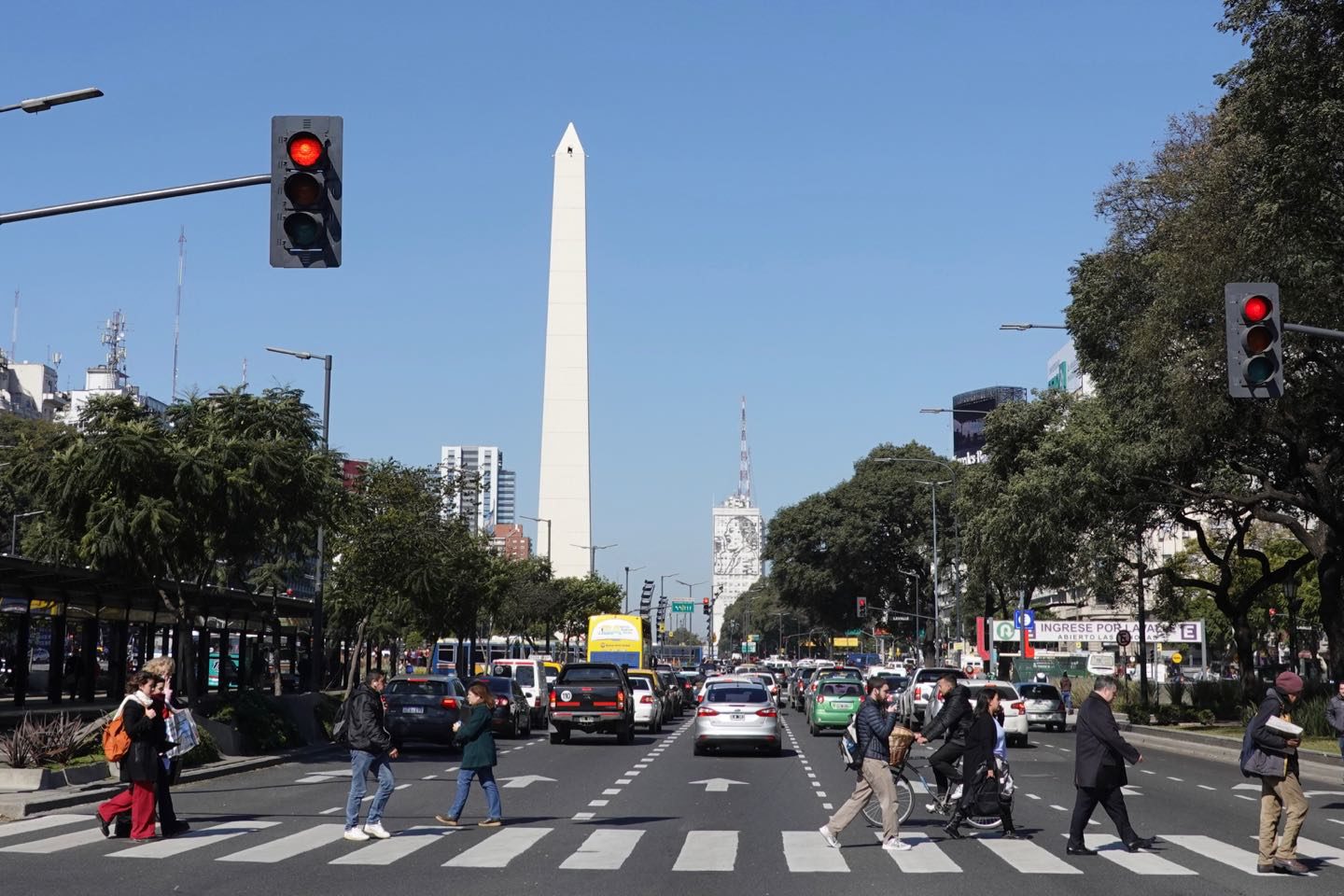
9 de Julio Avenue 
Mural de Evita
Tribunales
Area around Plaza Lavalle.
The Supreme Court -Corte Suprema de Justicia- is an important building you can easily check while walking around Teatro Colon.
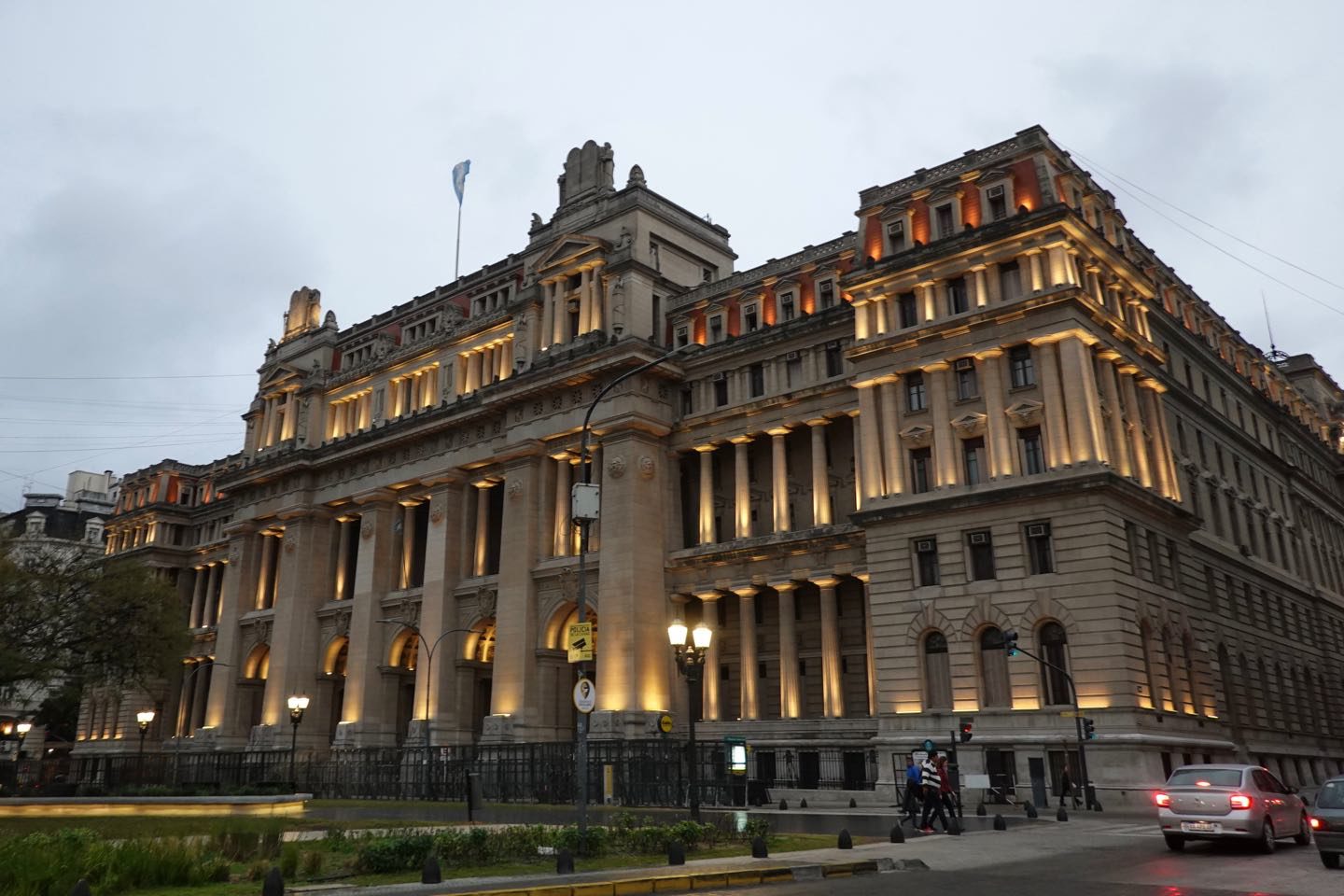
Teatro Colon
Teatro Colon is one of the most important theaters in the world. Most people only walk around it but it is worth take a look inside. Those who want to get a special experience can come for a play to enjoy it properly.
Entry fee: 15 USD general | 5 USD Argentinians / residents.
Type of visit: guided. Departures every 15 minutes.
Duration: 1 hour.
Opening hours: everyday from 9 to 17 hours.
Website: http://www.teatrocolon.org.ar/
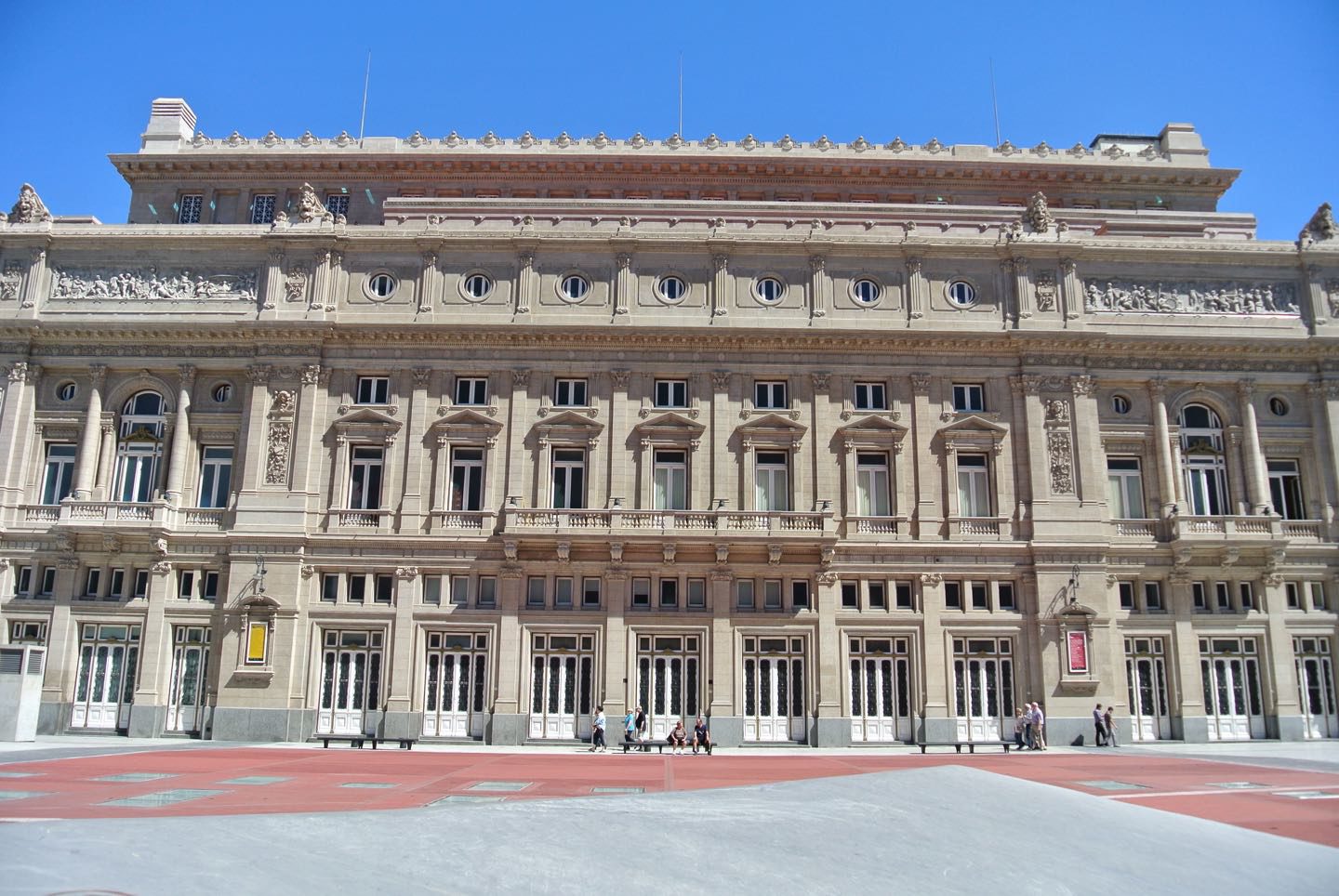
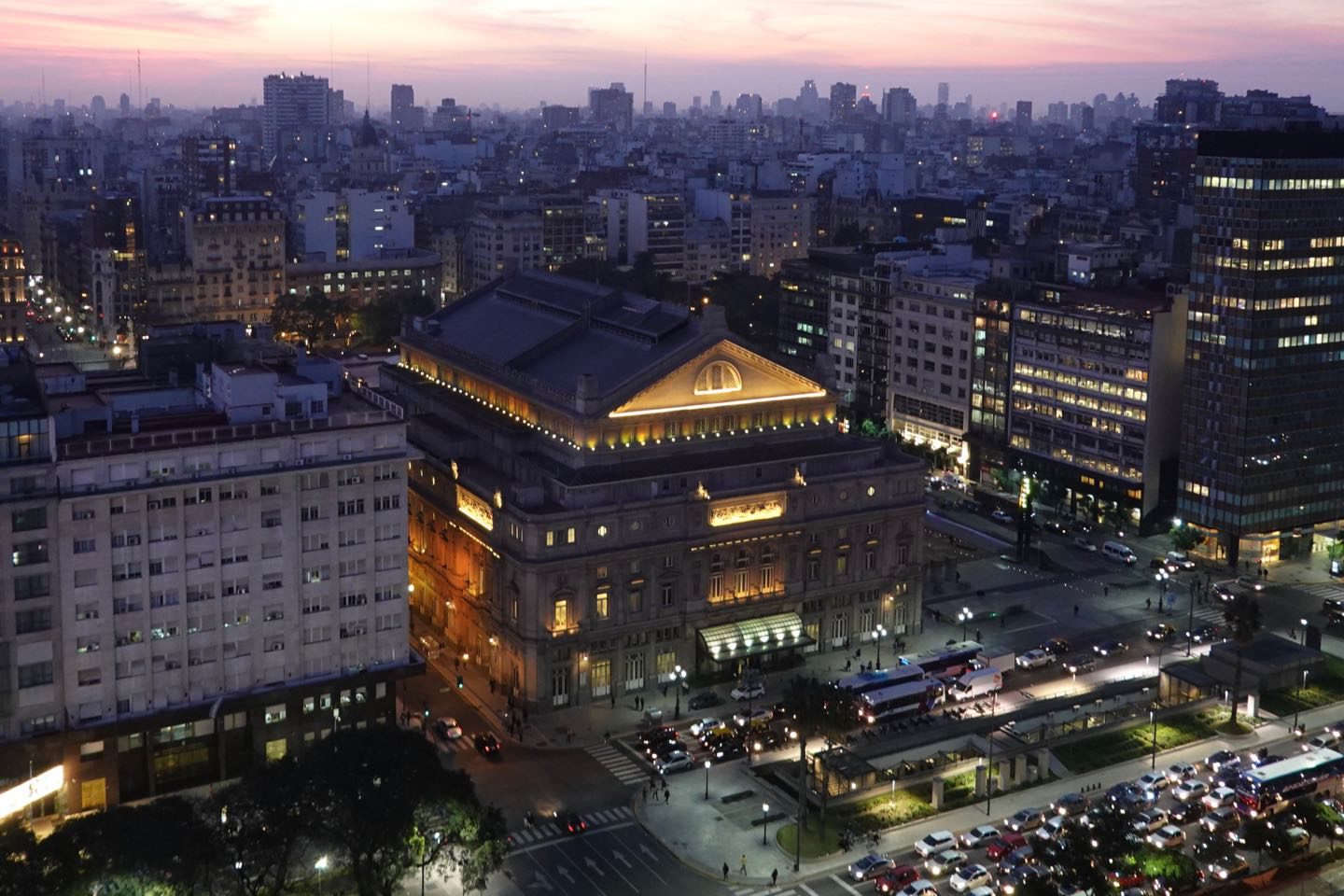
Retiro
Retiro is a neighbourhood full of embassies, palaces and other beautiful buildings all European style. The visit is basically walking around looking at these pretty buildings from the outside.
Around the Plazoleta Carlos Pellegrini there are some good ones like Mansion Alzaga Unzue Mansion -part of the Four Seasons Hotel– and the Embassy of France. Heading east along Arroyo Street, a nice narrow cobble street with little traffic and cozy coffee shops.
Nearby is the Museo de Arte Hispanoamericano -fee: 2 USD- where you can see how the local people lived and what they used 100+ years ago.
Moving forward along Arroyo Street the buildings get more imposing like the Palacio Estrugamou. Then you can add a detour to the Torre de los Ingleses (Torre Monumental) or keep walking through the city passing by Palacio San Martin, Monumento del Libertador in Plaza San Martín, Palacio Paz-Circulo Militar Argentino finishing in Florida Street (Microcentro area).
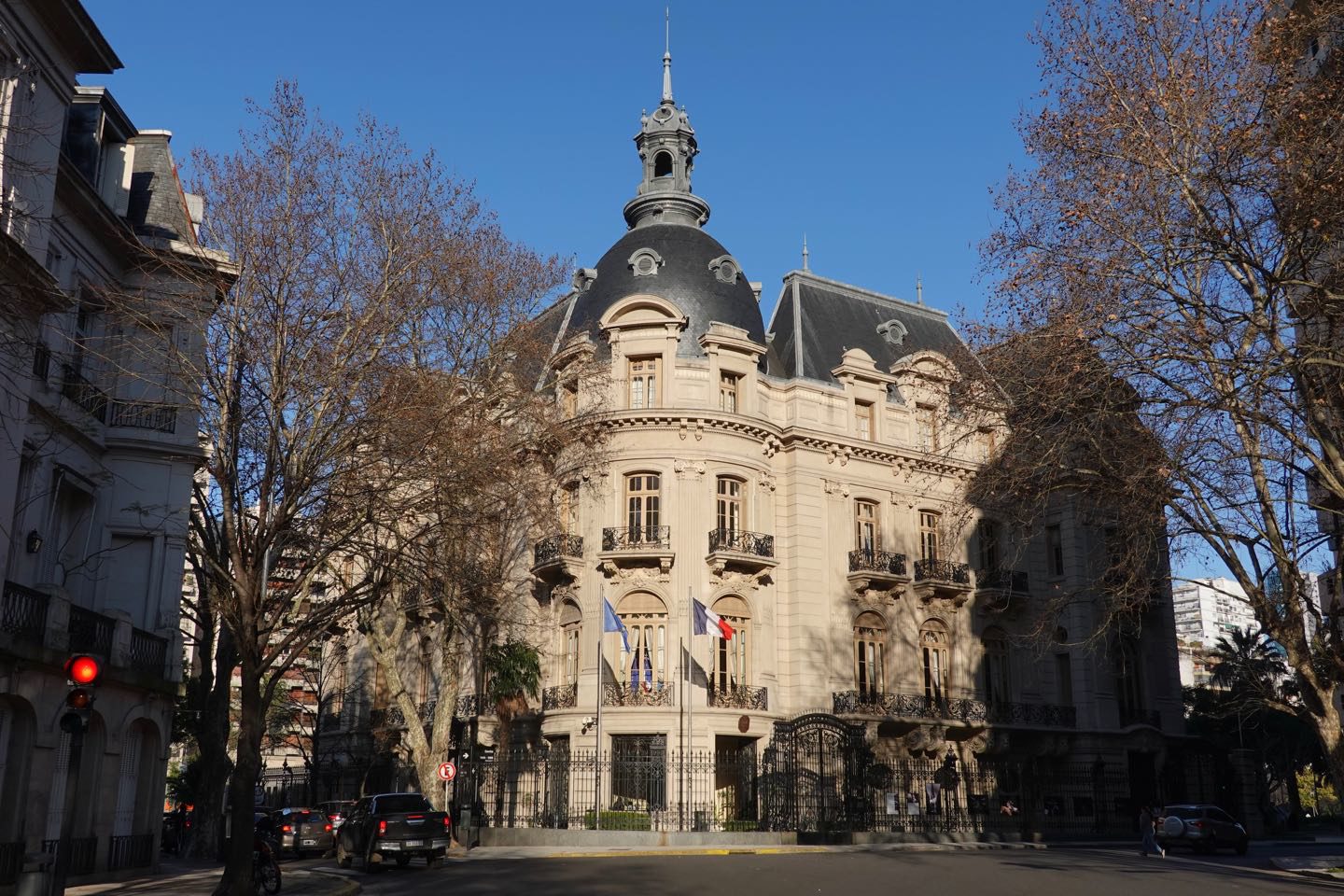
Embassy of France 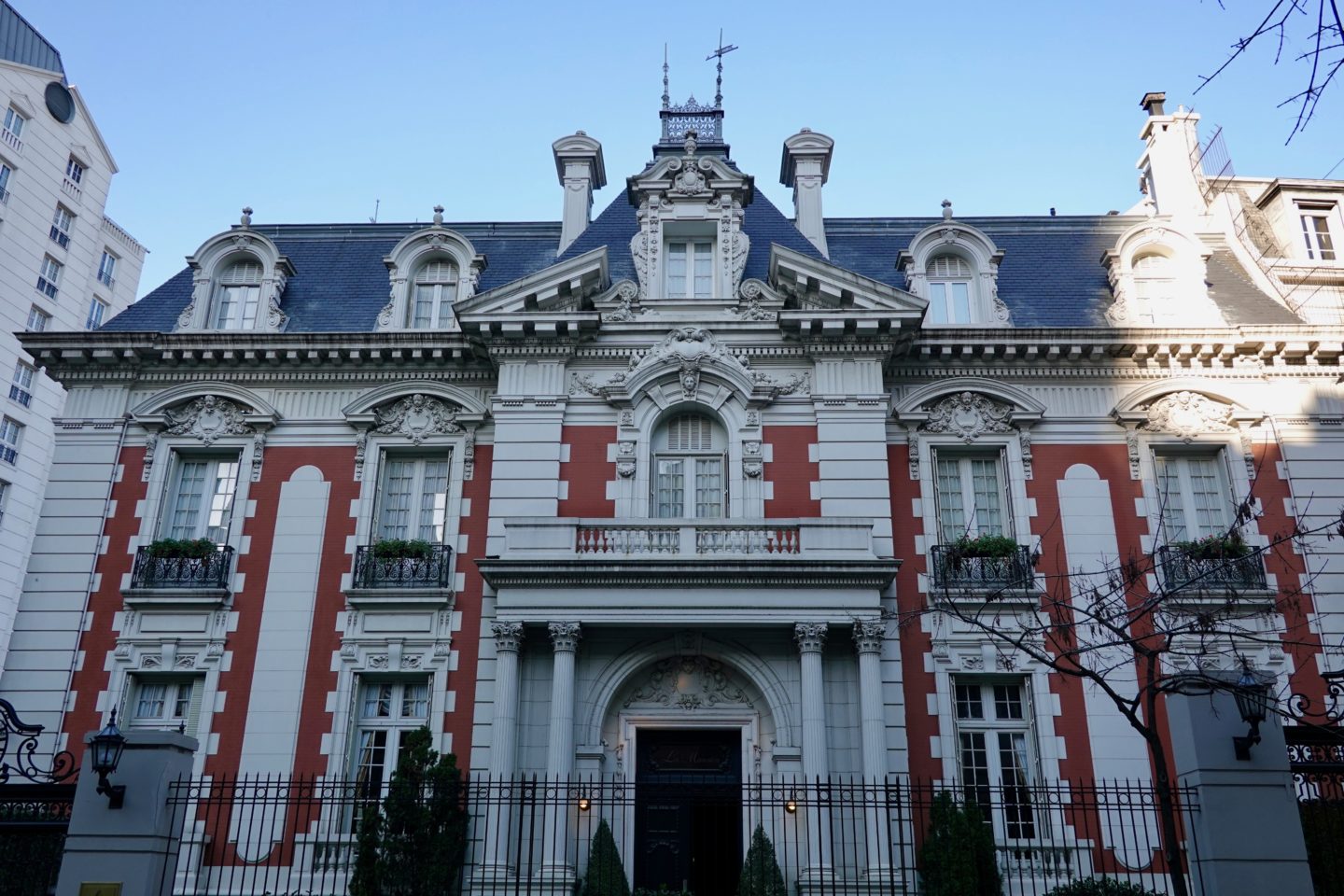
Alzaga Unzue Mansion
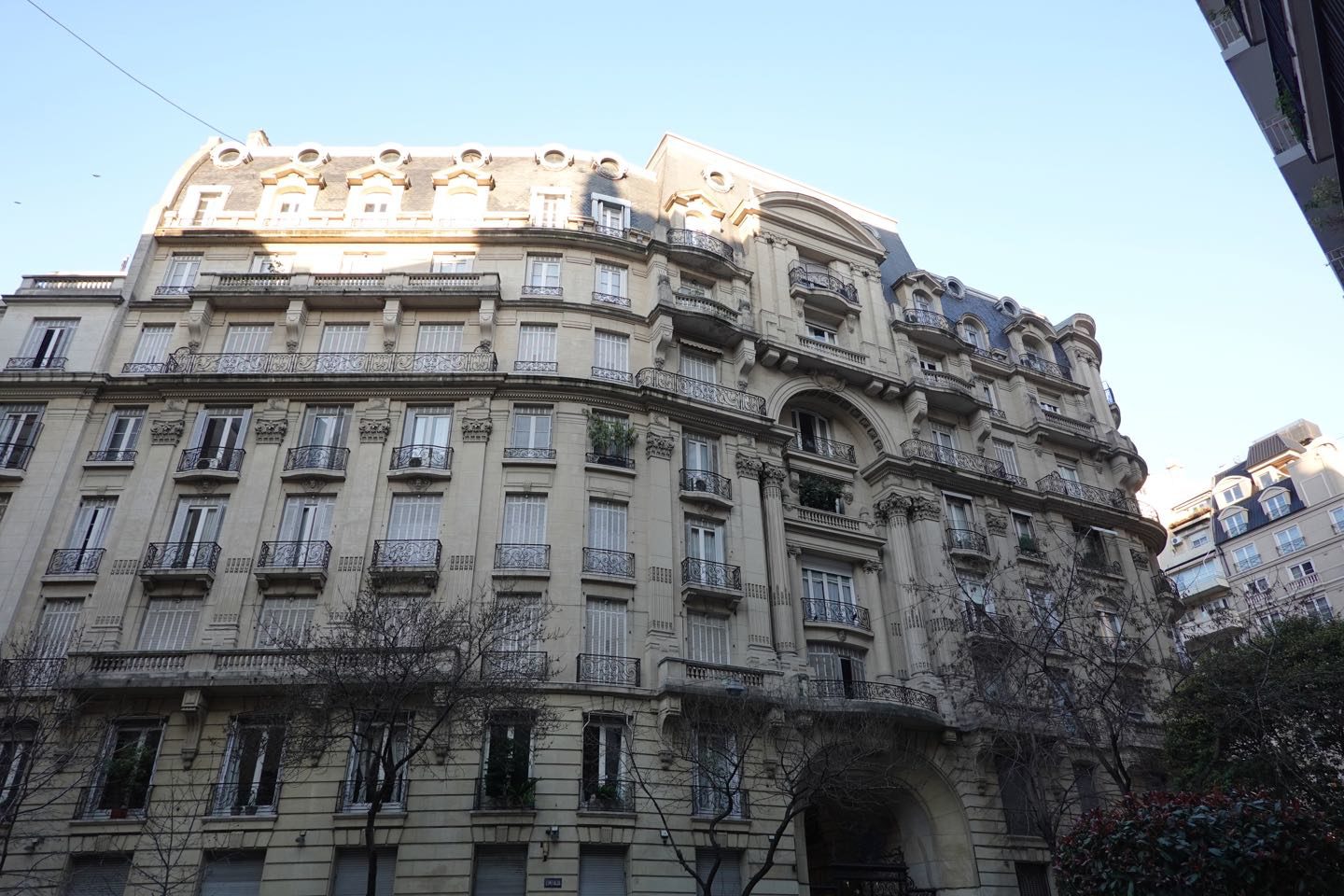
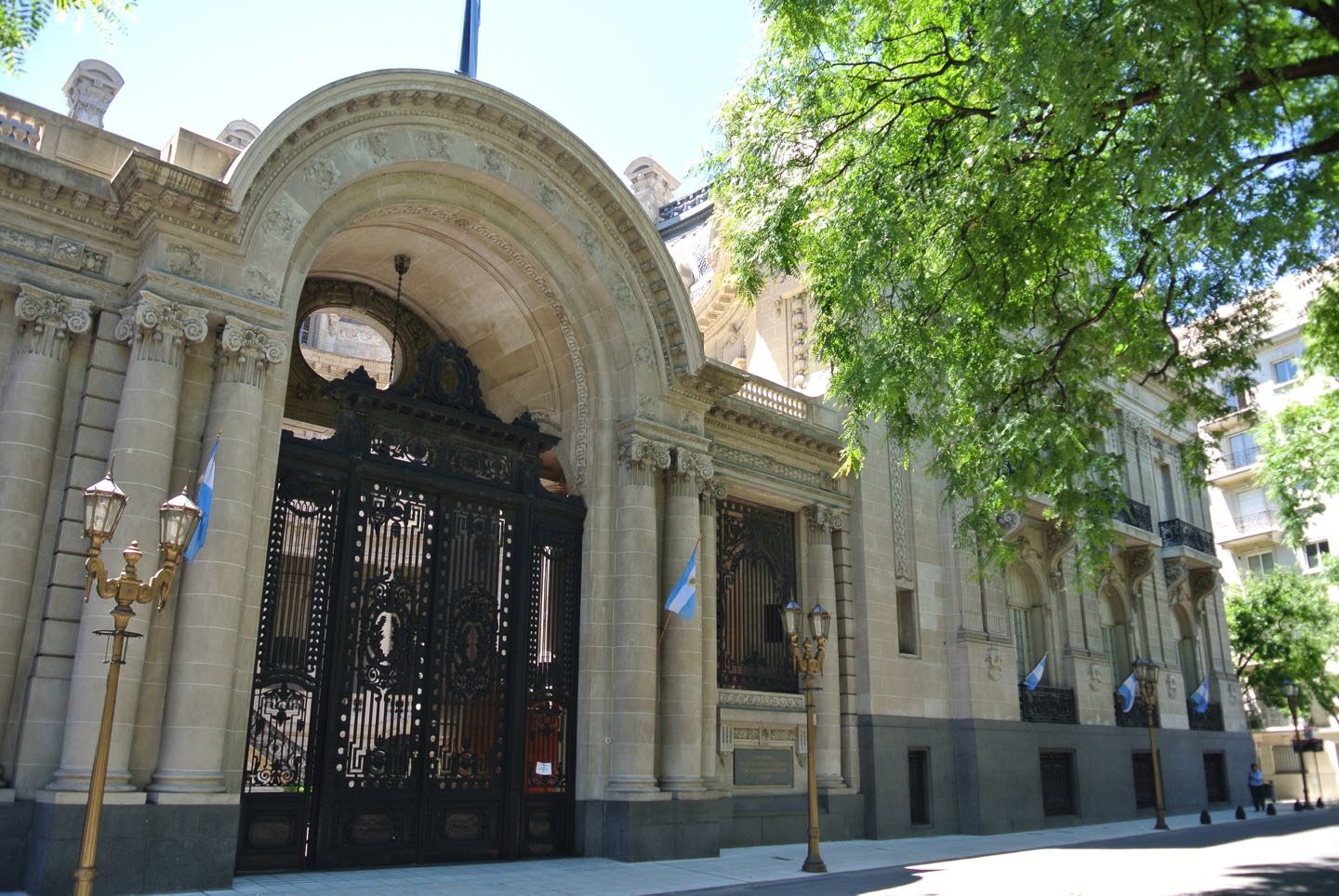
Microcentro
East side of San Nicolas neighborhood.
Microcentro is the center of downtown, basically a busy area.
La Florida or Calle Florida is a pedestrian street full of shops and many times street artist, including tango dancers, interesting for some people, horrible for others. Here’s Galerias Pacifico, a very pretty European style shopping mall, with a lovely dome in the lower floor. Many people visit it even without the intent of doing any shopping.
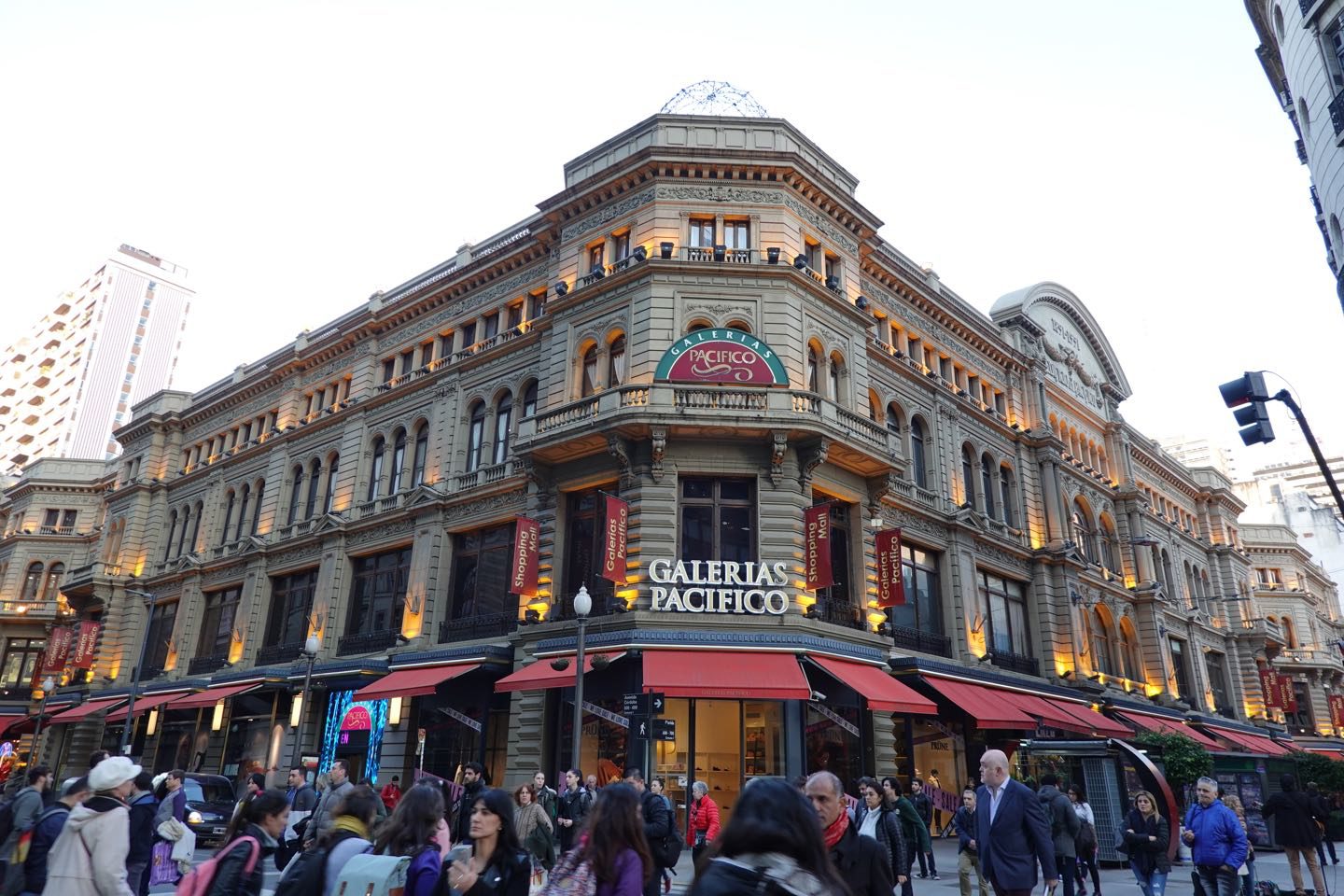
Galerias Pacifico 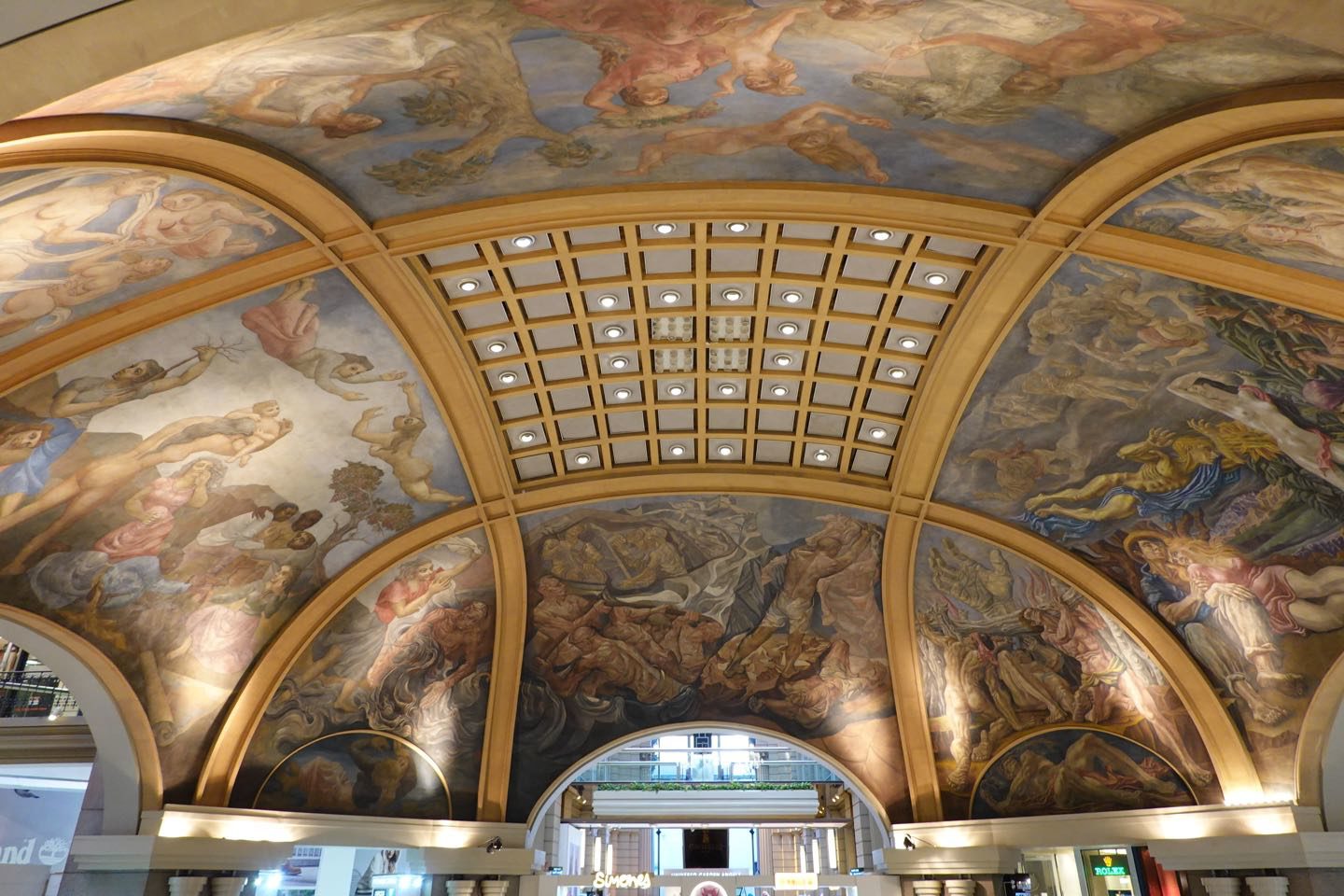
Dome of Galerias Pacifico
Congreso
Congreso is a very imponent and attractive building of great importance in Argentina’s politics.
Avenida de Mayo is one of the most important roads in town, it connects Congreso to Plaza de Mayo passing on the way through Palacio Barolo and the Mural de Evita from a close point at the intersection when with 9 de Julio Avenue.

Plaza de Mayo
Plaza de Mayo is the main square in town, here we have: strikes and protests as well as several important buildings such as Casa Rosada.
El Cabildo is a historical colonial building. Currently it’s a museum but I don’t recommend wasting time going inside.
Catedral Metropolitana is not so special as you would expect but is a very short stop even if you decide to go check it inside.

El Cabildo 
Catedral Metropolitana
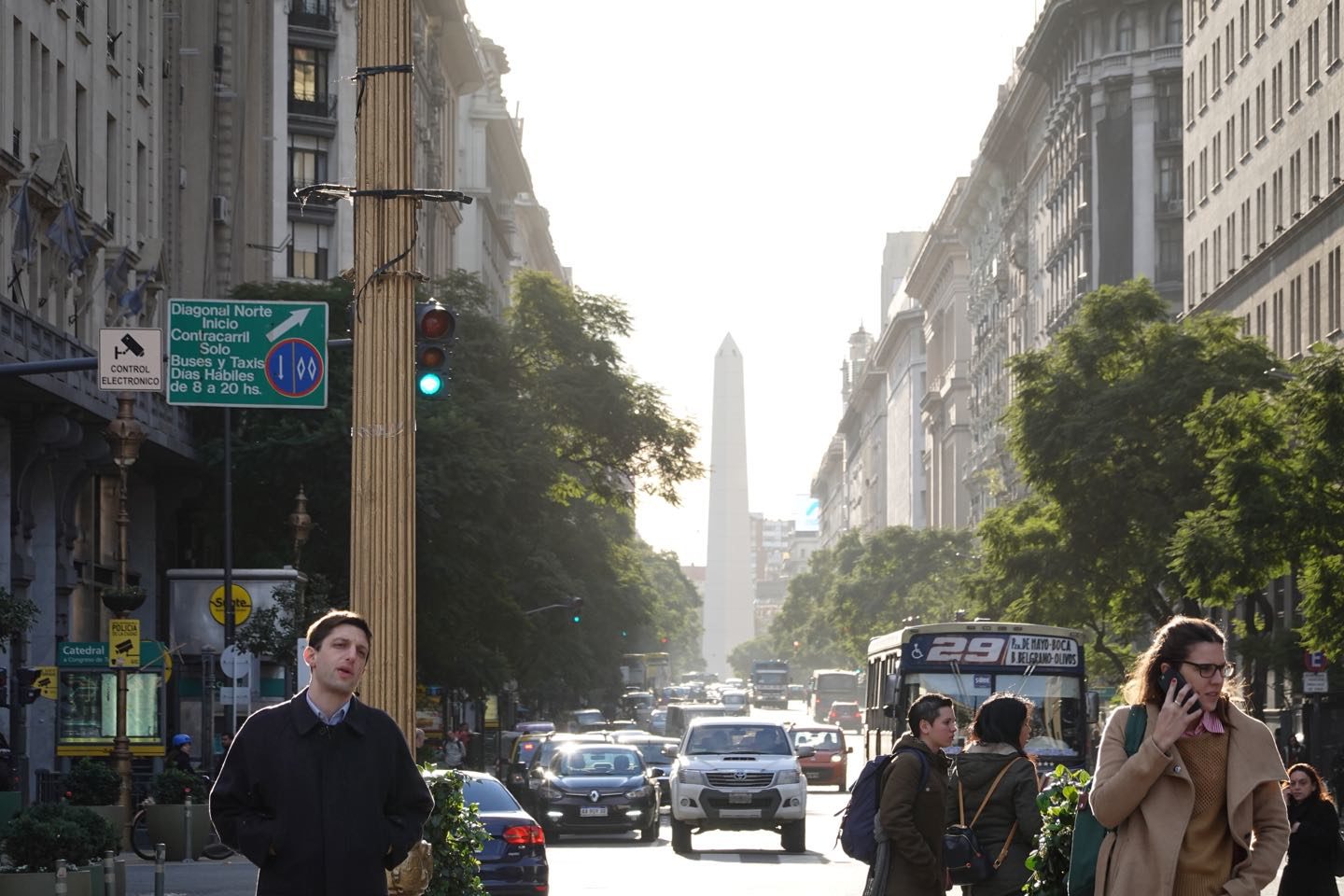
Casa Rosada
Casa Rosada (the pink house). United States has the White House, Argentina has the Pink House. Basically it’s the office of the president and you can even go inside for a visit.
Entry fee: free.
Type of visit: guided.
Duration: 1 hour.
Opening hours: Saturday from 10 to 18 hours.
Reservation: online.
Website: https://visitas.casarosada.gob.ar/

Casa Rosada 
Salon Blanco
Centro Cultural Kirchner
The CCK (Centro Cultural Kirchner) is a quite pretty building on the outside, totally worth walking in front of it on the way to Puerto Madero (it’s on the way from Plaza de Mayo or Microcentro). You can also go inside but the main reason for that would be attending to a concert.
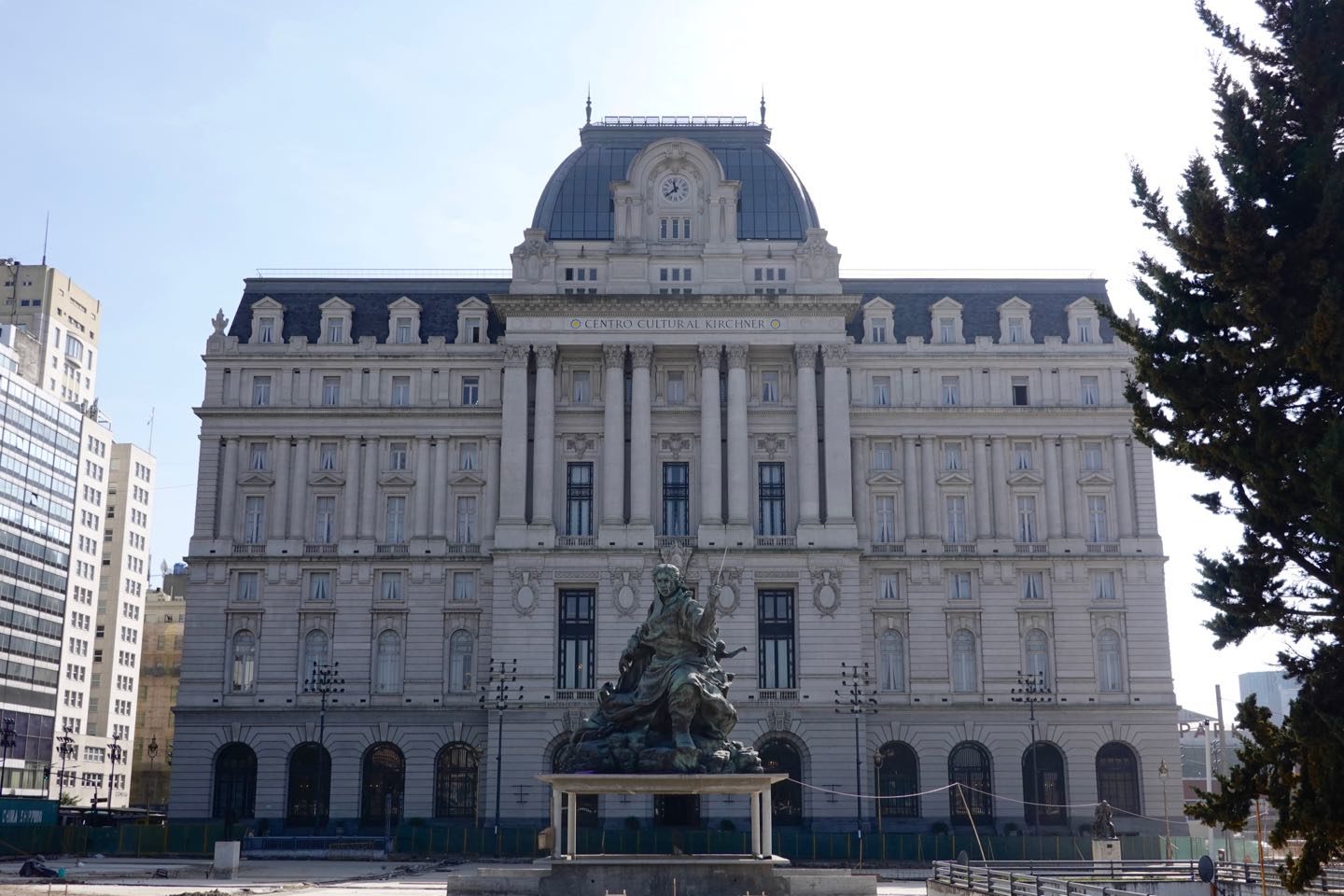
Where to eat in downtown
- Cafe Tortoni ($$$) the oldest coffee shop in Buenos Aires that is still open. They have tango shows sometimes at night.
- London City ($$) popular bar with with very good cakes.
- The New Brighton ($$$) bar-restaurant among the best in town for their food and very nice style.
- La Morada ($) traditional restaurant an interesting unique decor. Excelente experience, only “empanadas” -their specialty- pasteles, guiso and locro in their menu, all local cuisine. Highly recommended specially for foreigners. The place has a strong local style and clientele but not so touristic -so far-. Only lunch [10-16hr].
- El Cuartito ($$) the place to come for pizza, also local style.
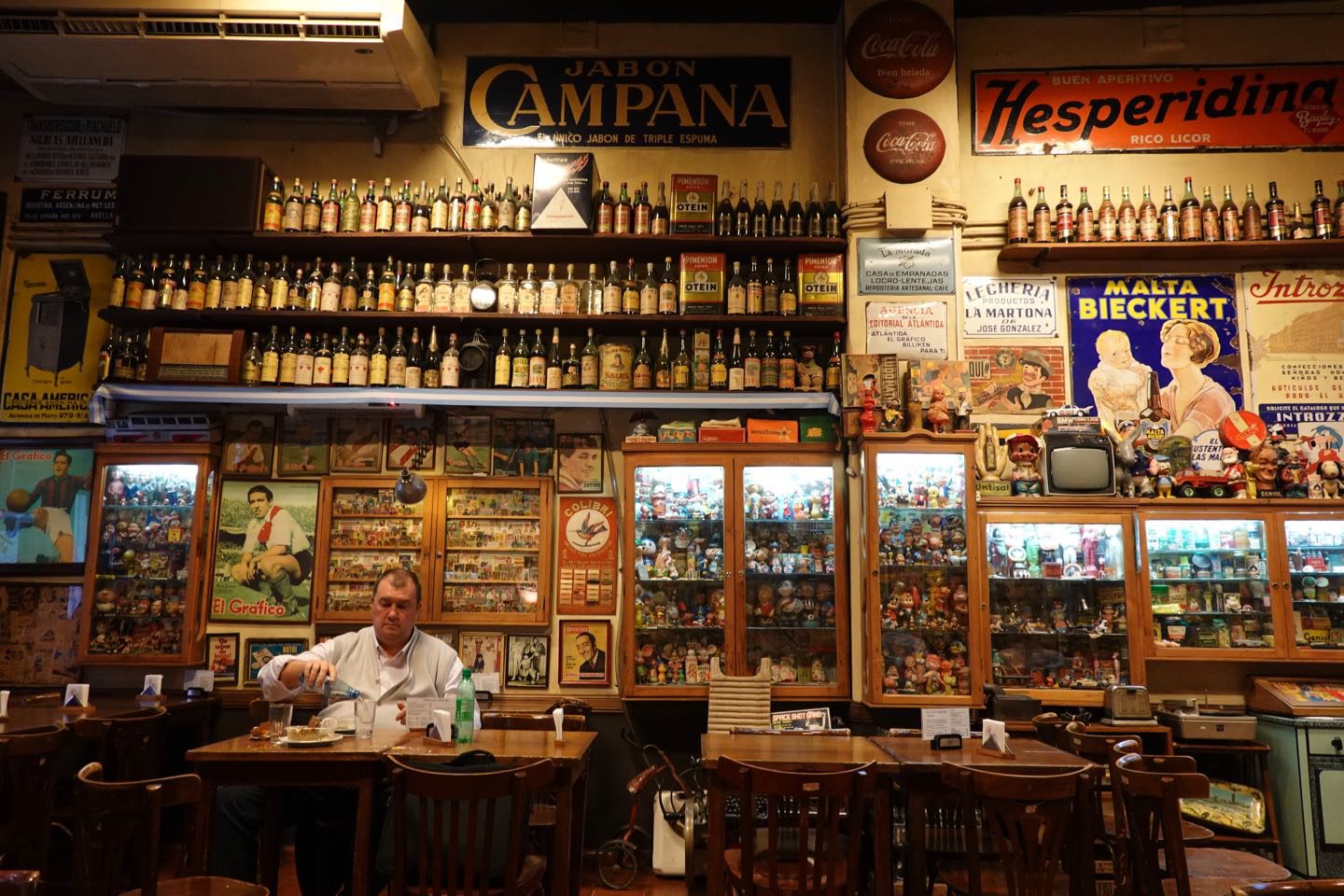
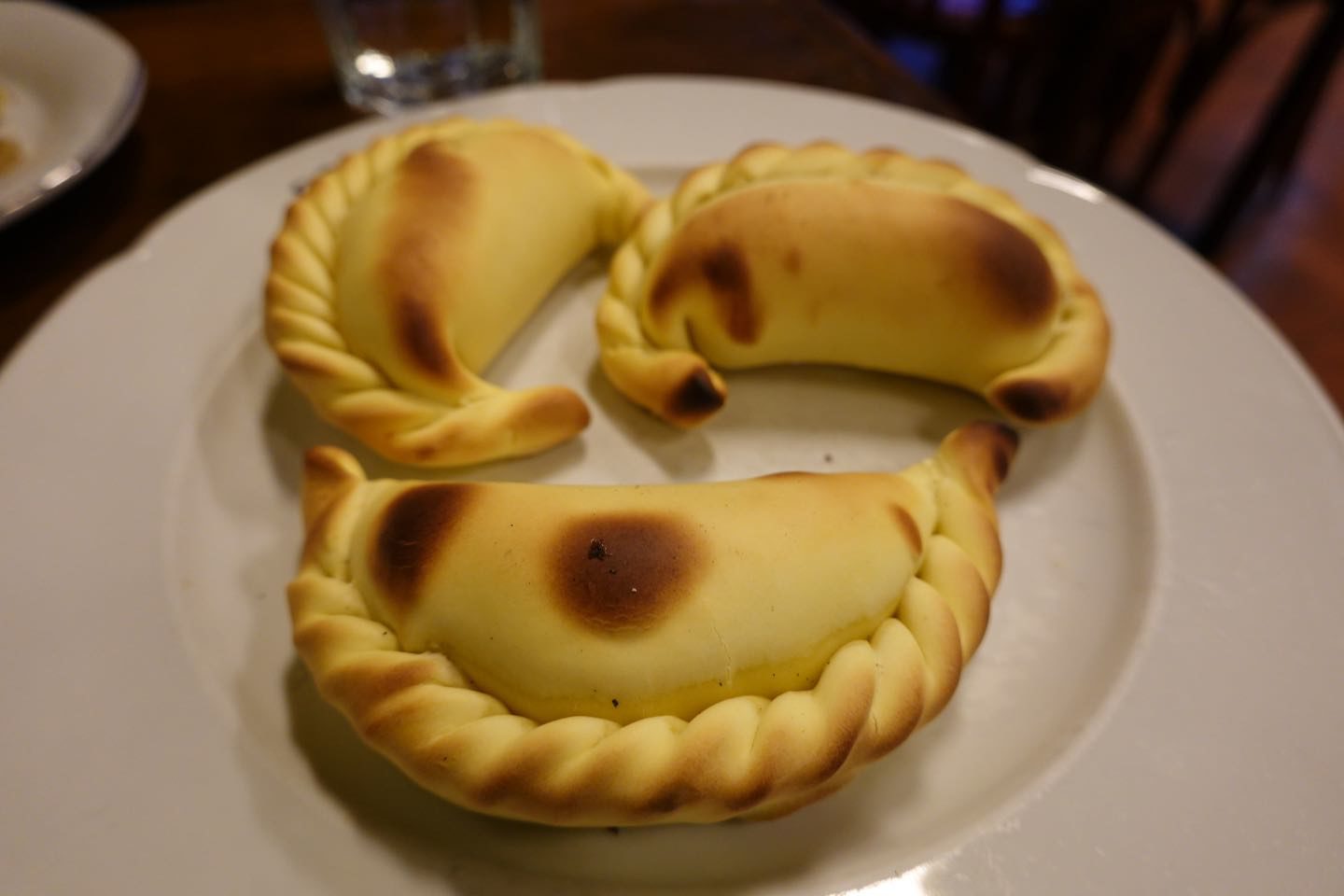
Empanadas (La Morada) 
Calambriles rabbit (The New Brighton) 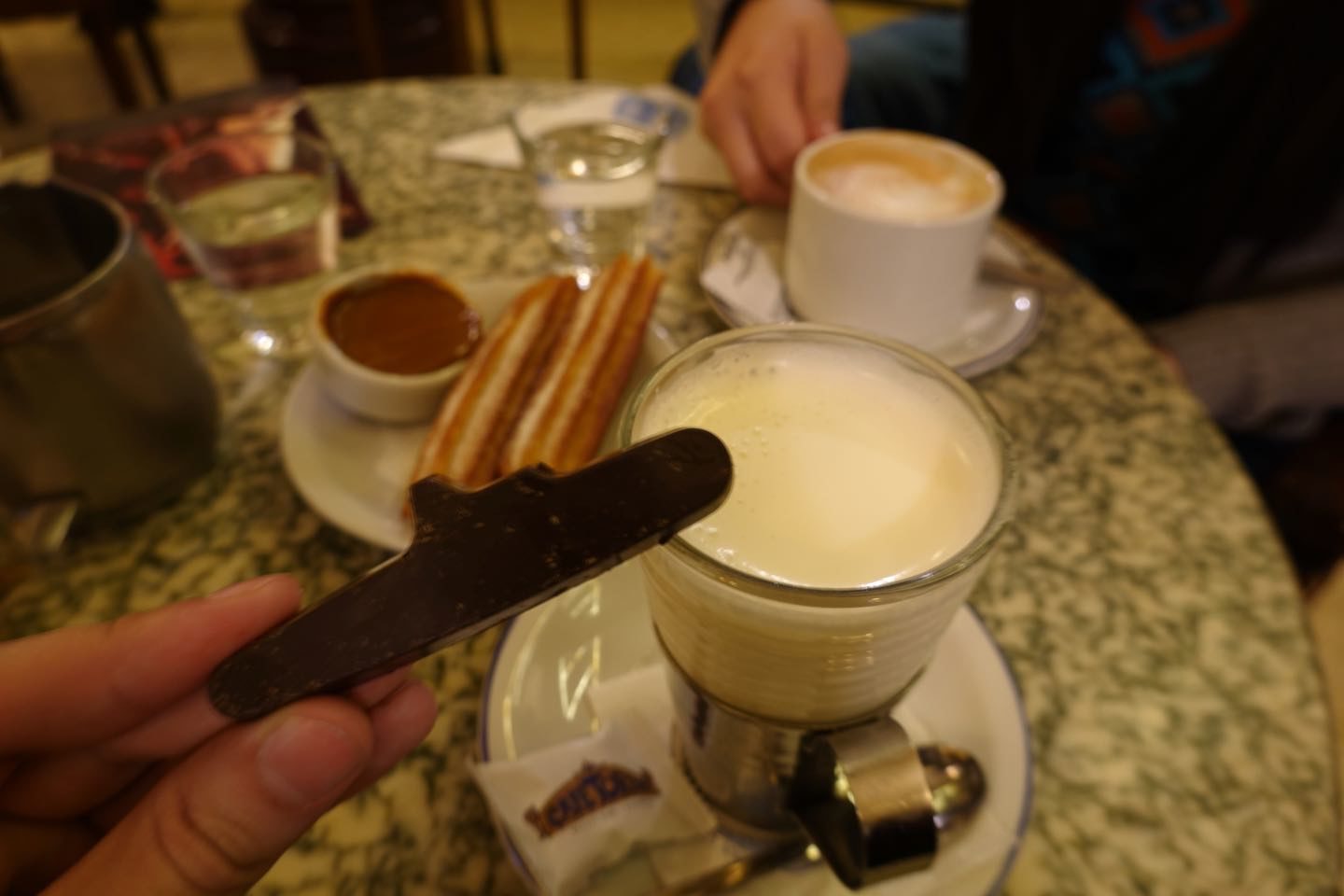
“Submarine” and “churros” (Cafe Tortoni)
Where to sleep in Buenos Aires
Downtown -including Retiro- is the best place to sleep in Buenos Aires, specially if it’s the first time you visit or you have short time. Around the Obelisco is the best location of all, you will save time, money and hassle with transportation.
- Hotel Panamericano ($$$) perfect location with the best views of the city and the Obelisco. It makes honor to the slogan “the viewpoint of Buenos Aires”. The rooms are pretty but what is really impressive is the pool on the last floor with the breath taking panoramic view. You should spend every sunset here if you choose this hotel. I would say this is the best option for a tourist on this price range. Alternative: Alvear Art Hotel ($$$).
- Claridge ($$) Europlaza ($$) and Luxor ($$) are pretty ones for a fair price.
- DEL900 Hostel Boutique ($) cheap and beautiful recycled style.
- Hostels: Milhouse Hostel Avenue or Milhouse Hostel Hipo.
Recoleta is a luxury neighborhood with luxury hotels, location is good but in general I don’t recommend it if you visit for the first time. Esplendor Plaza Francia ($$) is a good modern hotel for a fair price. Alvear Palace ($$$) is luxury European style with almost 100 year of history.
Puerto Madero is another luxury neighborhood but modern, nothing special, all new, modern and luxury hotels. Location is good but it has little of the essence of the city. Alvear Icon ($$$) and Faena Hotel ($$$) are very good hotels.
San Telmo is about the experience not the confort. It is for those looking to stay in this old neighborhood in an old house of local style which doesn’t look like a hotel at all. Location is so so but not very nice at night. Posada de la Luna ($) is a good one.
La Boca… you don’t want to sleep in La Boca…
Palermo is the restaurant and drinking area, sleeping here is an excellent option for long stays, nightlife or just enjoy the endless bars and restaurants all around the place. Casa Chic ($$) represents the style of the neighbourhood. Art Factory Soho ($) great value for money and Home Hotel ($$) for those looking to enjoy the nice garden.
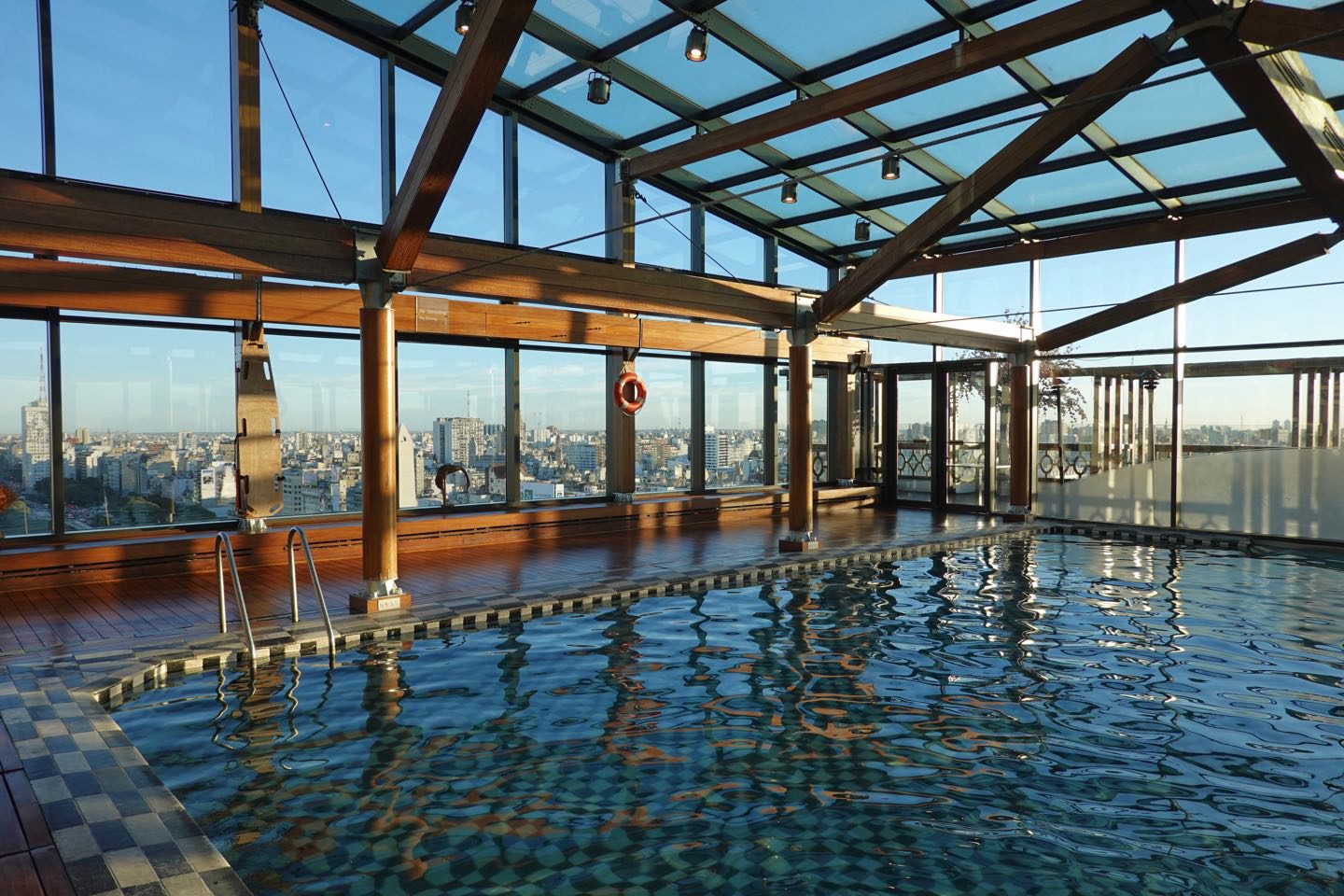


the pub 
Studio City View
Recoleta
Recoleta is the most upscaled neighborhood in Buenos Aires, mainly residencial area and shops, it has beautiful streets to wander randomly for hours.
Barrio Norte is a part of Recoleta although it’s almost same meaning in the day to day talk.
Palacio de Aguas Corrientes
The Palacio de Aguas Corrientes–The Water Company Palace- is an architecture master piece very little visited yet one of the most beautiful in the city. Its impressive construction shows how precious resource is the water to build something that looks far more important than almost any other building including the the presidential office.
Built in 1894 for storing 72 million litters of water to supply Buenos Aires. Currently its used for office work but it also has a museum section which try to explain the history of the running water supply and sewer system.
The visit takes 1 hour and it’s free of charge but I recommend just check the palace from the outside.
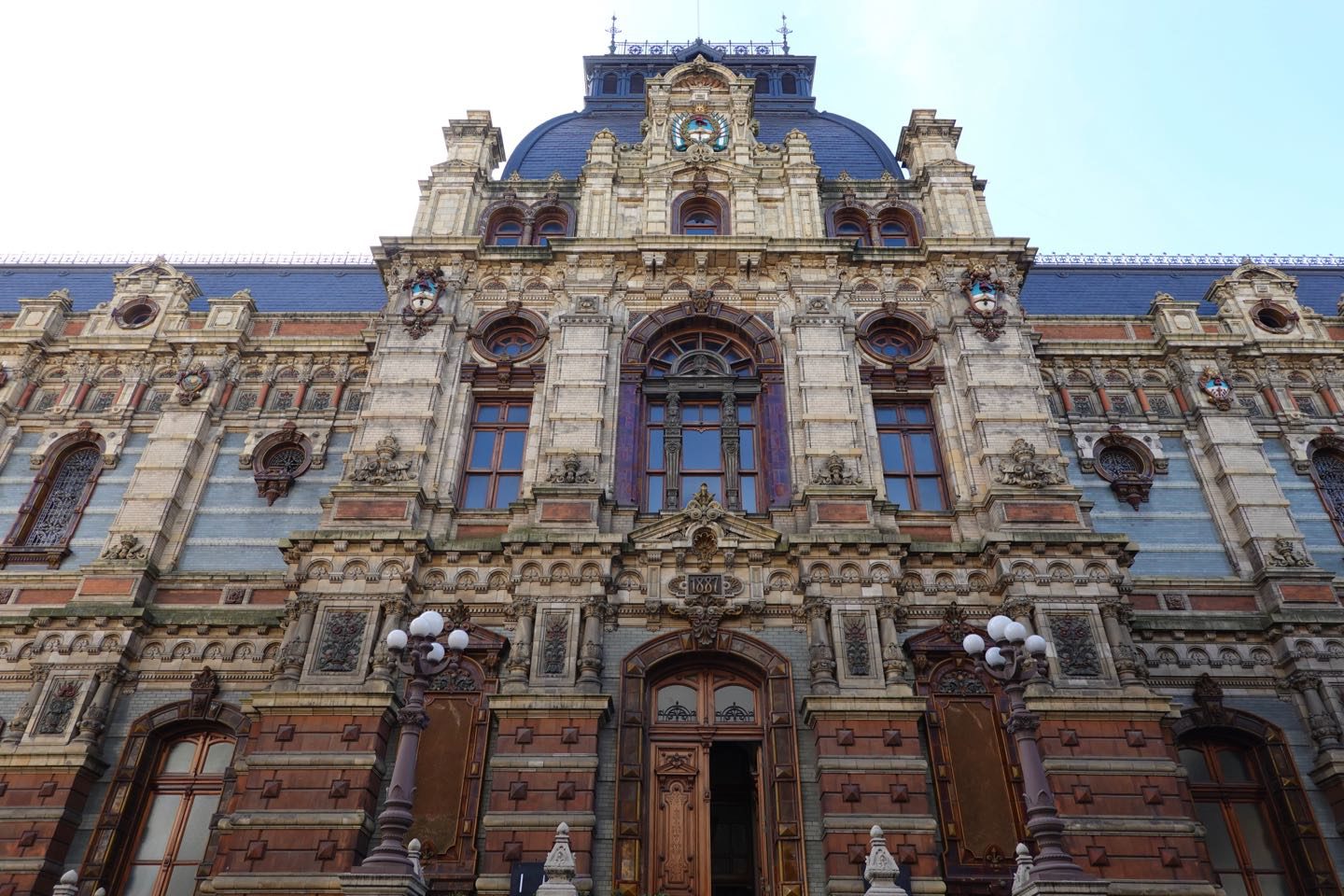
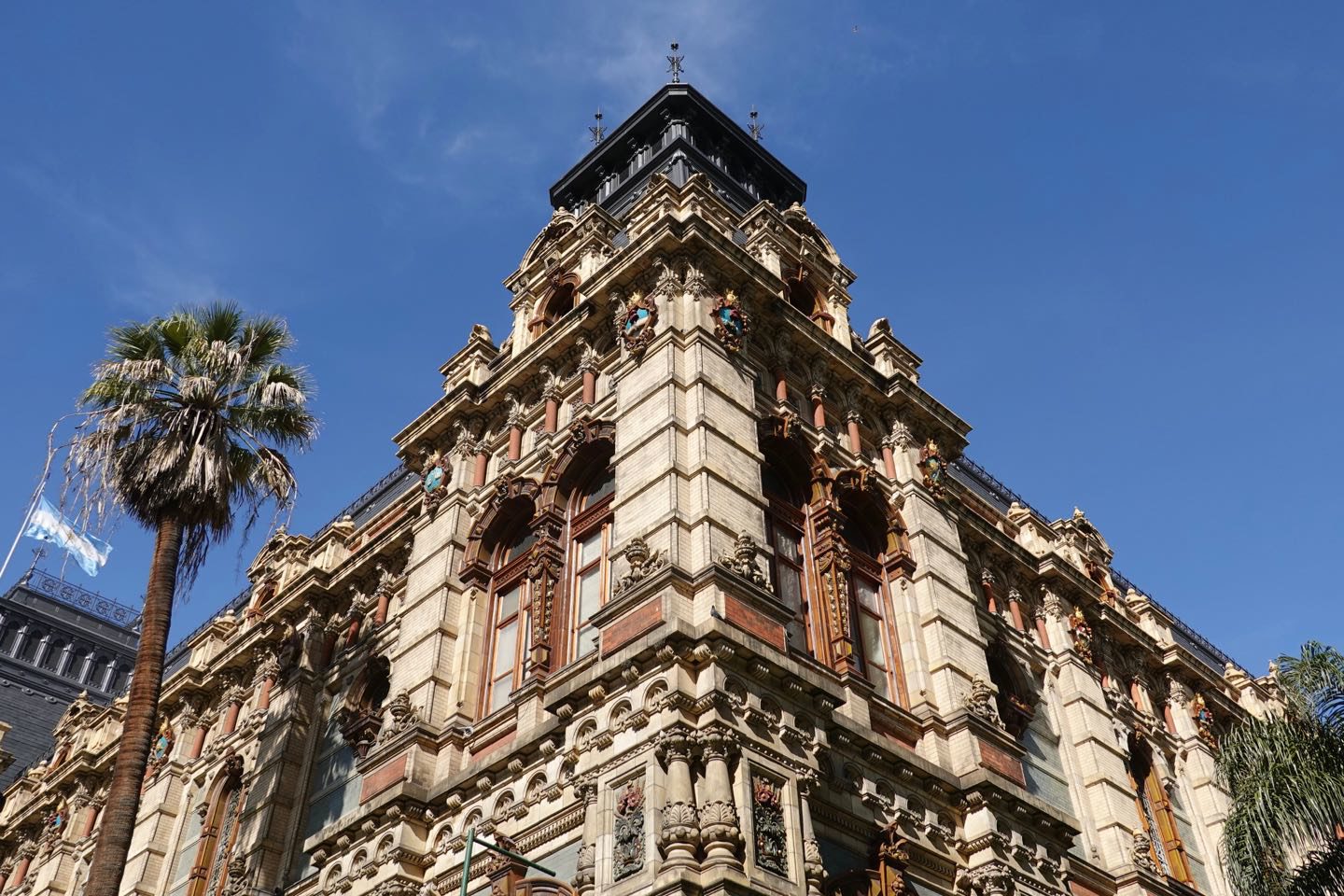
Edges of the palace 
Details on the facade
El Ateneo
El Ateneo Grand Splendid it’s a bookshop not very special on the outside but very impressive on the inside. The building is a theater that was turn into a bookshop keeping the exquisite design, reason from which the newspaper The Guardian chose it as the second most beautiful bookshop in the world. This is a short stop but you can have a coffee where it once was the stage of the theater.
Santa Fe Avenue is a comercial streets with many clothing shops, famous but don’t give it too much importance to it unless you want to do some shopping.
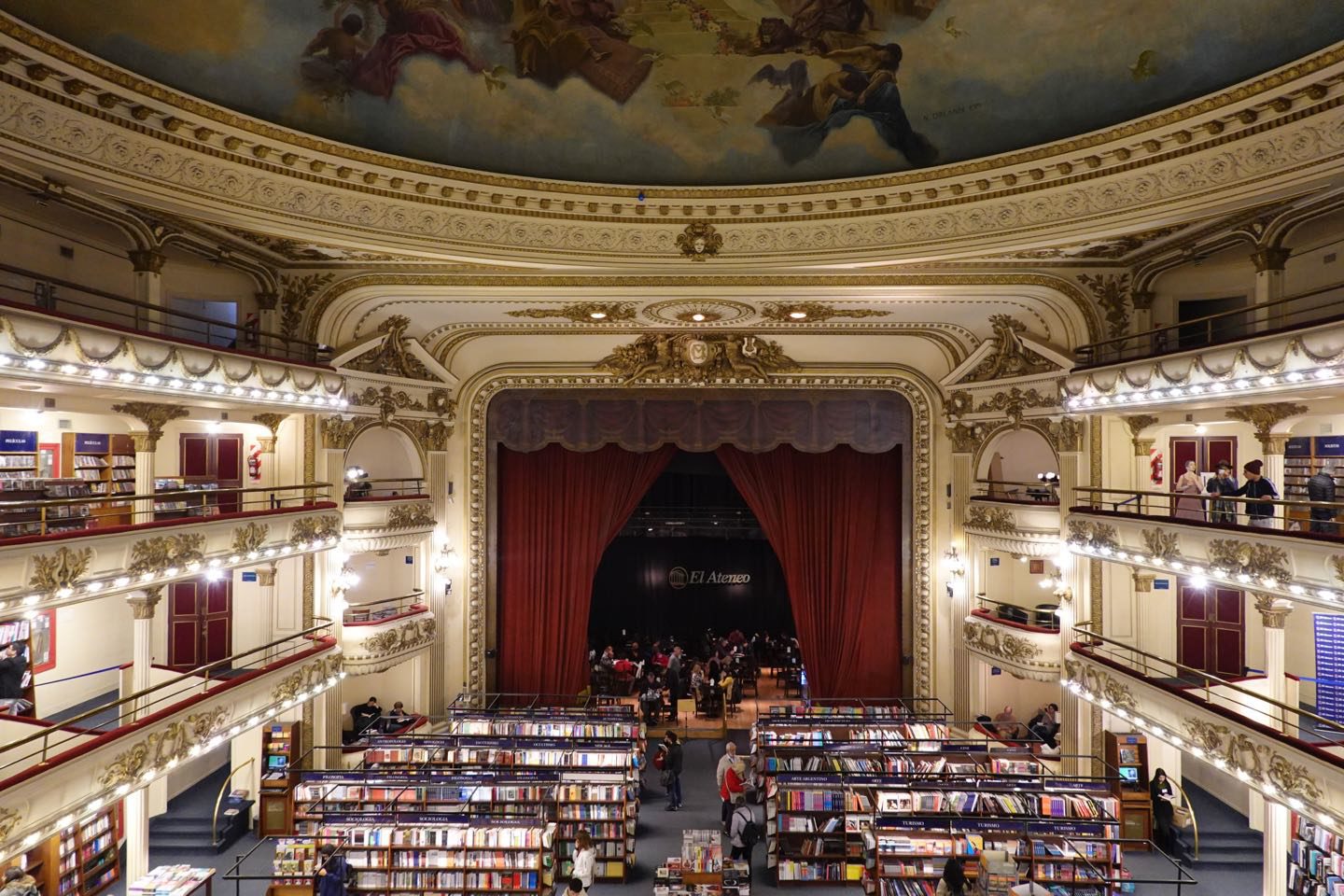
Cementerio de la Recoleta
La Recoleta Cemetery –Cementerio de la Recoleta-. It might sound weight to go spend time in a cemetery for fun but this one is a very interesting one. Infinite number of internal street and pantheons that looks like houses makes you feel you are in a miniature city. I remember some friends when young used to come here just to hangout.
This place has some of the most important people from the country, the most famous one is the Tomb of Evita.
On the entrance of the cemetery there is a big map with the locations of all major tombs to navigate this maze.
Next to the cemetery is the Basilica Nuestra Señora del Pilar, not worth for a tourist.
Entrance: on Junin Street.
Entry fee: free.
Type of visit: self guided or guided.
Duration: 30-60 minutes.
Opening hours: todos los días de 7 a 17.30 horas.
Website: https://turismo.buenosaires.gob.ar/
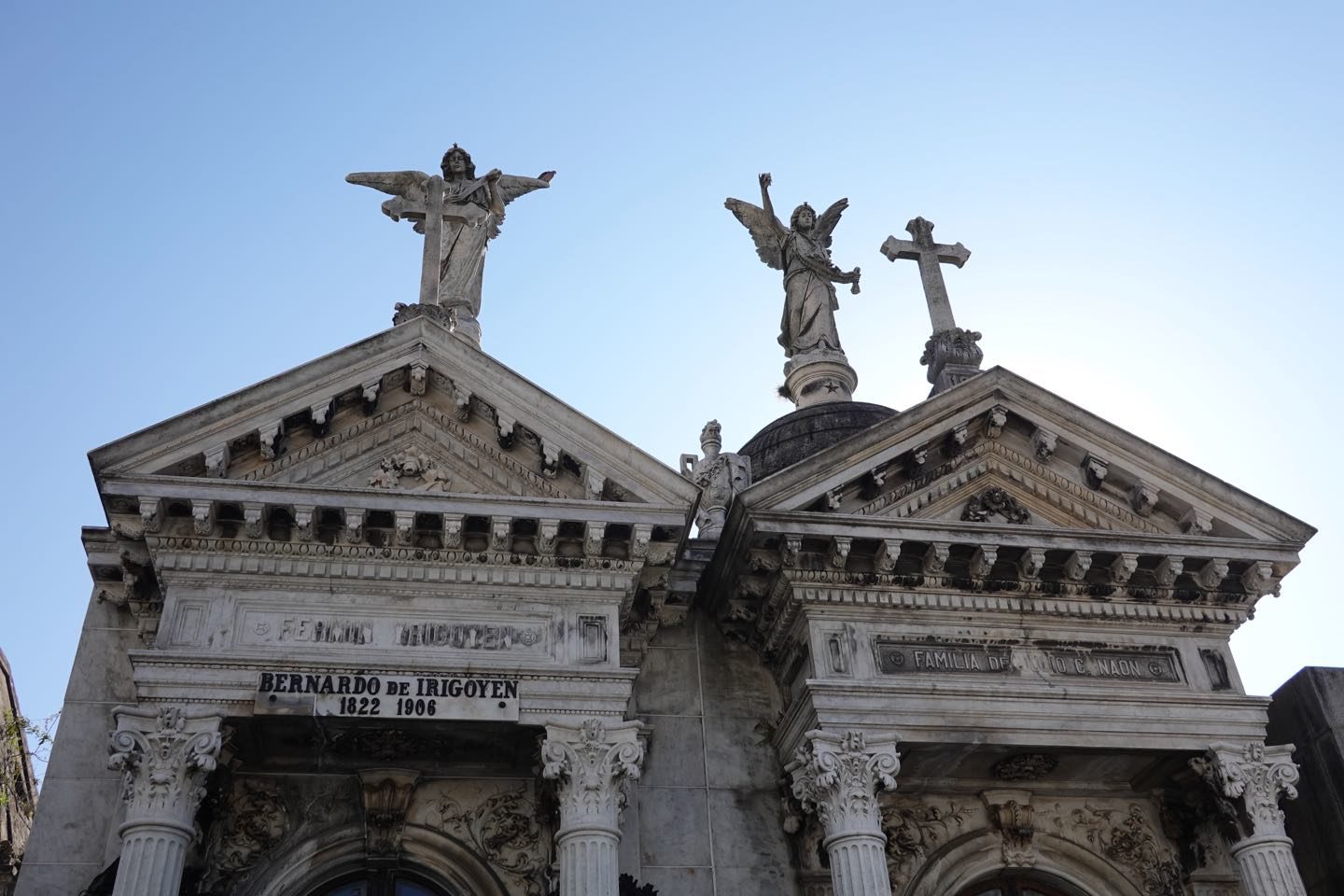

Internal street 
Main street inside the cemetery
Plaza Francia
Area of Recoleta around Plaza Francia including the cemetery.
In front of the cemetery there is an nice area for relaxing with some small park, many bars and nice views. One option is to walk further along Alvear Street for a few blocks to end up in Retiro neighbourhood. The cemetery and the area around the entrance is the best.
On the oposite side is Plaza Francia (the park itself) is not special.
National Museum of Fine Arts -Museo Nacional de Bellas Artes- is only worth for those interested in an exhibition. The building from the outside is no pretty or special.
Museum and Historical Archive of the Faculty of Law UBA -Museo y Archivo Histórico de la Facultad de Derecho de la UBA- is a little more interesting but still won’t doesn’t make it to the list of worth visiting places for a tourist.
Lastly there is the Floralis Genérica, a giant metal flower in a park that opens and closes with the sun. The idea is very original and it’s an icon of the city but for me -and many others- not very interesting.
Keep going on this direction (towards west) and you will walk though a beautiful quiet area full of embassies then reach the parks of Palermo neighbourhood.
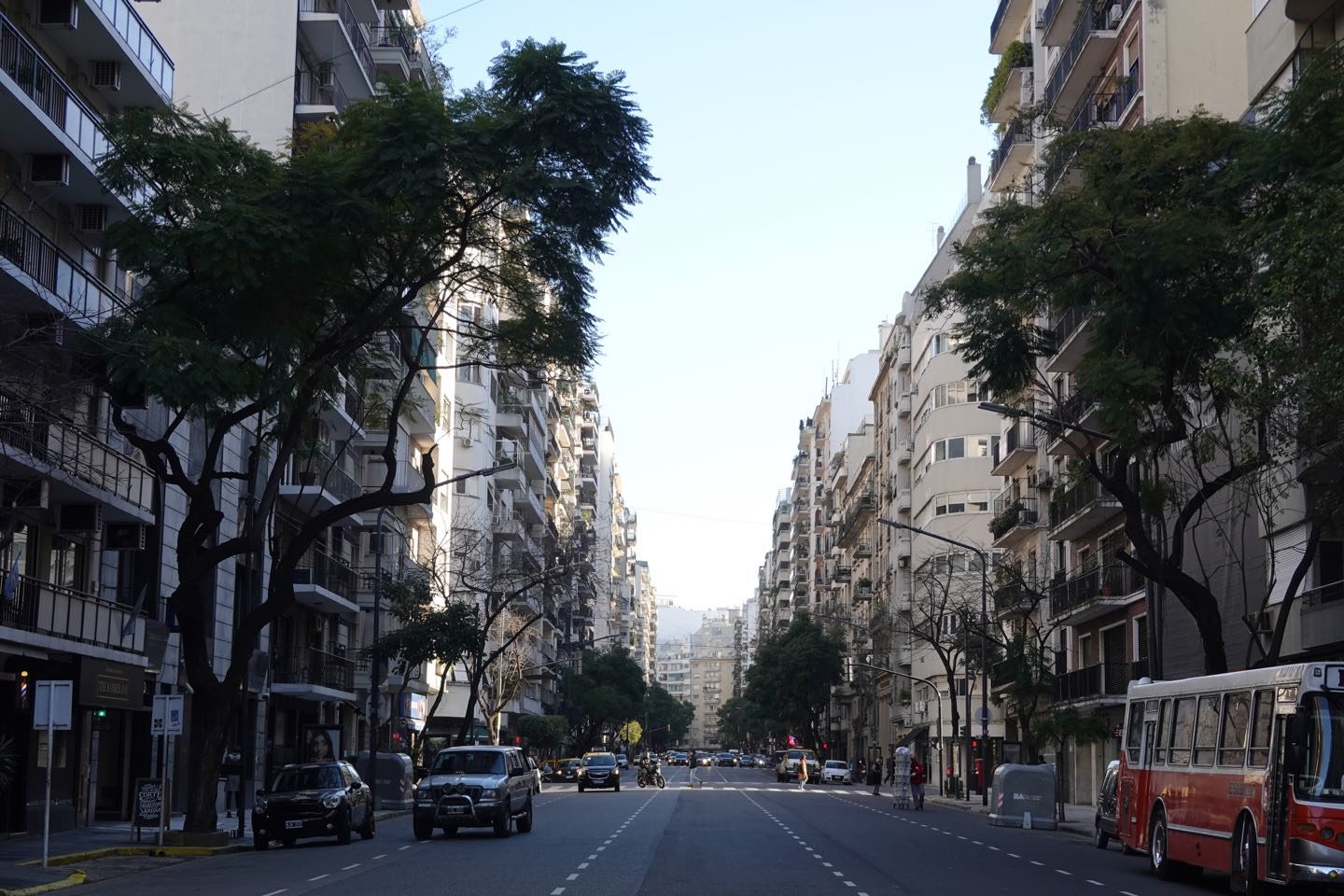
Where to eat in Recoleta
- El Burladero ($$) spanish restaurant with good reputation and tasty food. The “menu ejecutivo” -meal of the day- offers a a lot of food at a good price.
- La Biela ($$) one of the oldest bars in town. Inside there is a sculpture of Borges, one of the most notorious Argentinian writers -I recommend to read “The Aleph” one of his best short stories-. The bar is nice but nothing special, only stop if you are thirsty.
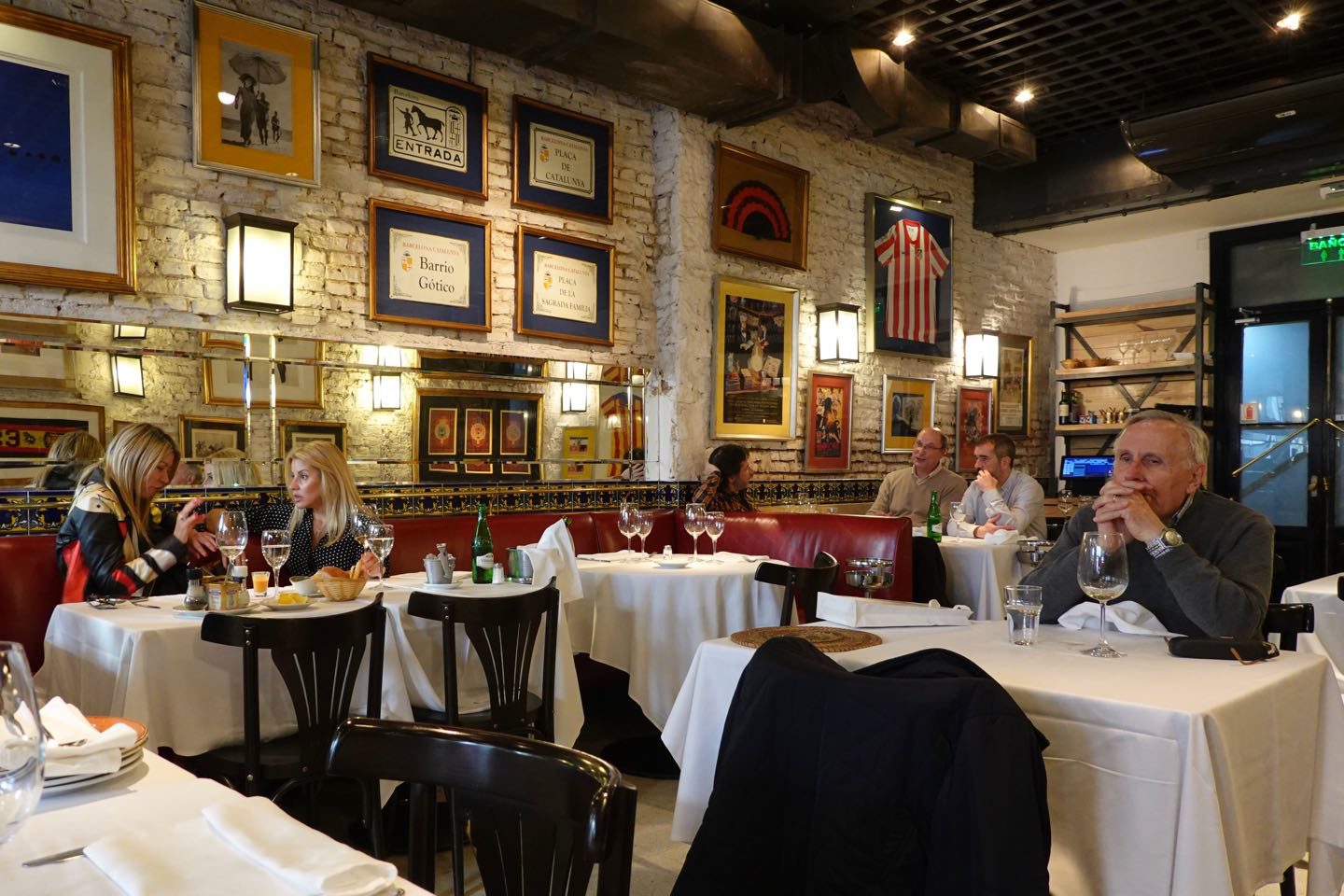
El Burladero 
La Biela coffee shop. Borges (left) and Bioy Casares (right)
Puerto Madero
Puerto Madero is the new, modern style luxury neighborhood of Buenos Aires. The river, the views, the well planned urbanization plus the proximity to downtown makes this a very popular place for locals but not so special among foreigners because of the lack of originality. If you do decide to come stick to short talk along the river. Best visit on daytime with good weather.
I recommend start on the CCK then head to the river, once there, you are in Puerto Madero. Keep walking without crossing it the river until you reach the Fragata Sarmiento (worth visiting) then you can cross to the other side through the Puente de la Mujer -Woman’s Bridge- which people make fun of it for being dedicated to woman but not consider them in the design since the platform for walking is made of wood with gaps in between making it a nightmare for anyone in high heels.
Once on the other side you can see the bridge with the city on the back, then walking some more along the river -going south is best- you can take a short walk on the parallel streets in between buildings then cross back to the city on the last bridge (Rosario Vera Peñaloza).
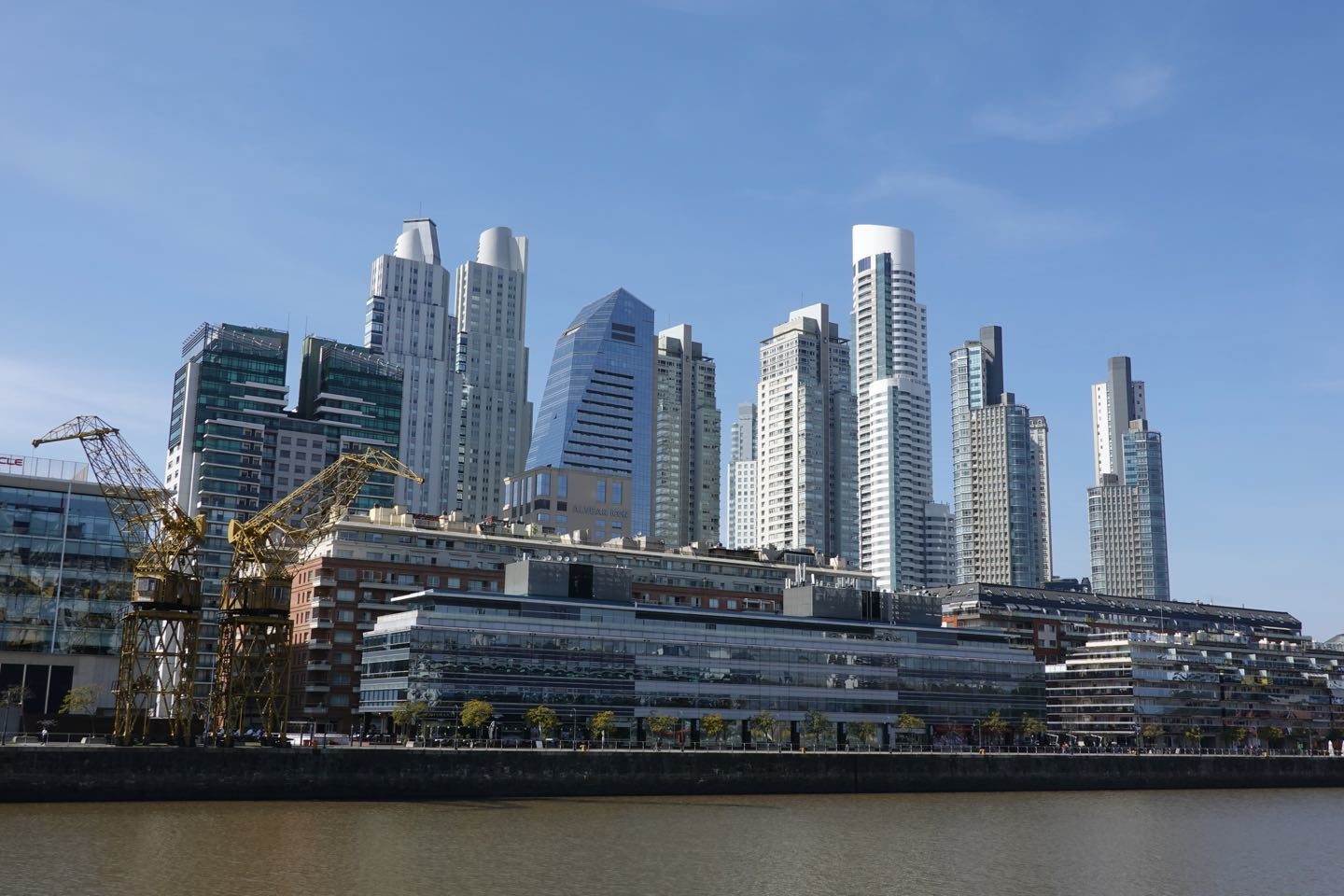
Fragata Sarmiento
Fragata Sarmiento is a historical boat built in 1897 used as school for training sailers navigating around the world. Currently it’s a museum you can go inside and see how traveling by sea was like 100 years ago. Check the staterooms, where they eat, where they spend time and lot more.
Entry fee: 1 USD.
Type of visit: self guided.
Duration: 30-60 minutes.
Opening hours: everyday from 10 to 19 hours.
Website: http://www.ara.mil.ar/pag.asp?idItem=112


Deck 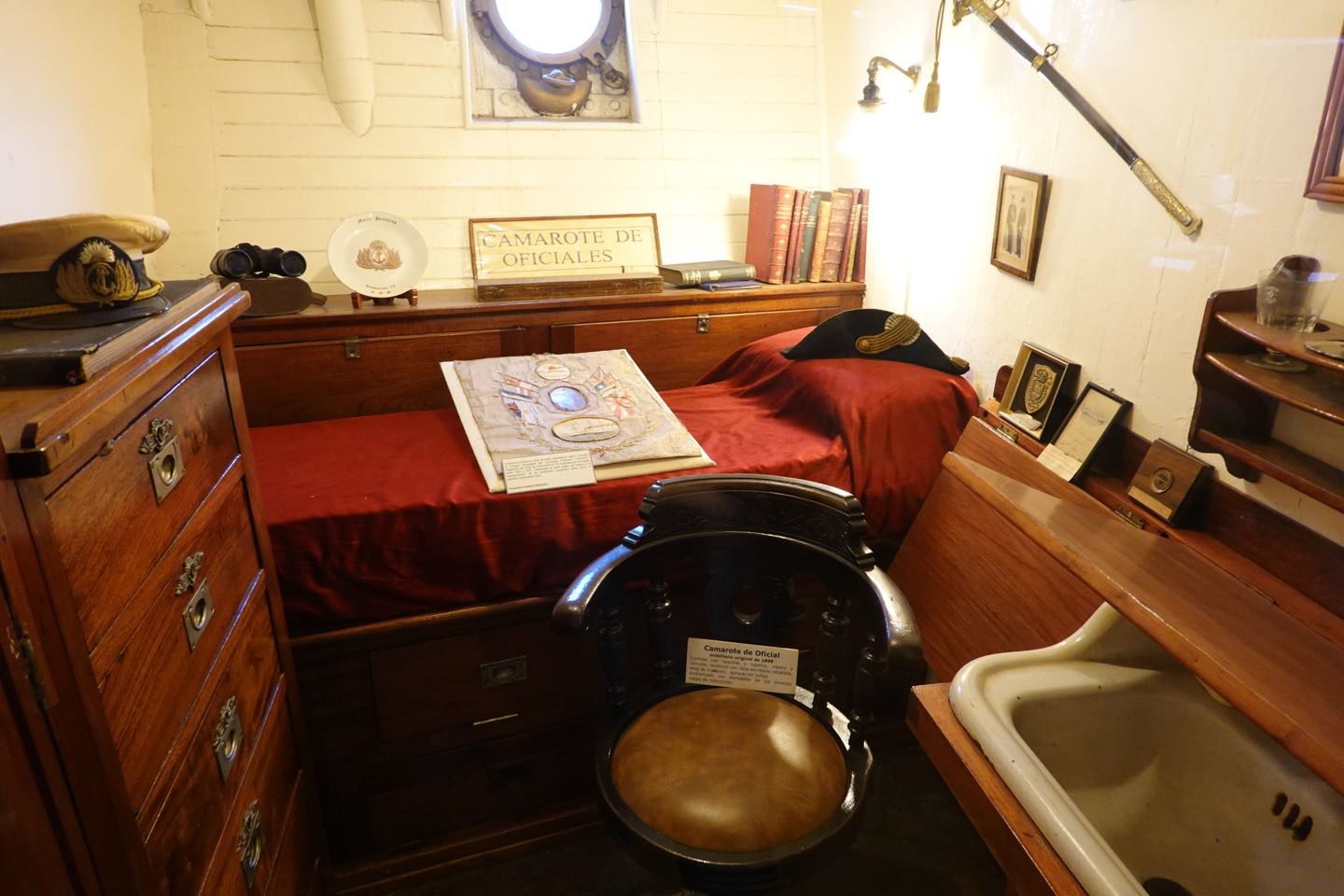
Stateroom
San Telmo
San Telmo is one of the oldest neighborhoods in Buenos Aires with a colonial style lot more original than the rest of the city. It’s known for their antique shops, the old houses and the tango that plays in the bars and dancer on the street on the weekends around Plaza Dorrego: the main square.
This neighborhood is small, the best is walk along Defensa Street (from the intersection with Independence Street) until reach the main square. This is the main street where most galleries and nice shops are located.
Feria de San Telmo (San Telmo Street Fair) -only on Sundays from 10 to 16 hours- is one of the most popular ones in the city. The main square and Defensa St. cut the access to vehicles and sellers set up shop in the street to sell mainly antiques. Here you can find many artist including tango dancers!
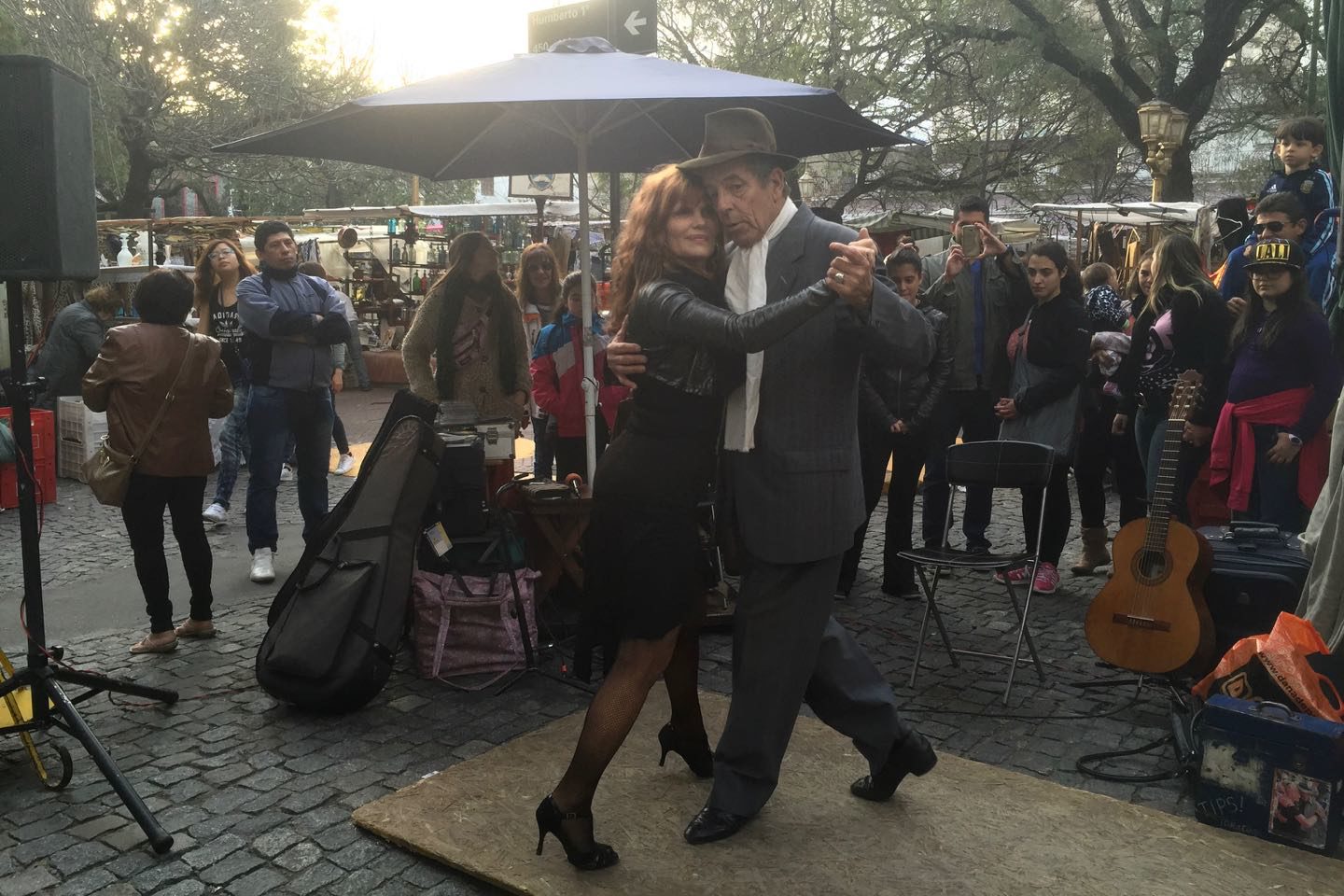
Mercado de San Telmo
Mercado the San Telmo (San Telmo Market) is a beautiful roofed market with over 100 years of history. There are two areas: one is dedicated to the antique shops which comes to live on the weekends. The other one is focused on food and while it’s still very pleasant the modernization is making it loose its charm. Nonetheless it is still totally worth the visit.
Main entrance: Carlos Calvo St. crn. Bolivar St. There is another entrance on Defensa St.
Main entrance: Carlos Calvo St. corner Bolivar.
Secondary entrance: por Defensa St.
Entry fee: free.
Duration: minimum 30 minutes.
Opening hours: everyday from 9 to 21 hours.
Website: http://mercadosantelmo.com.ar
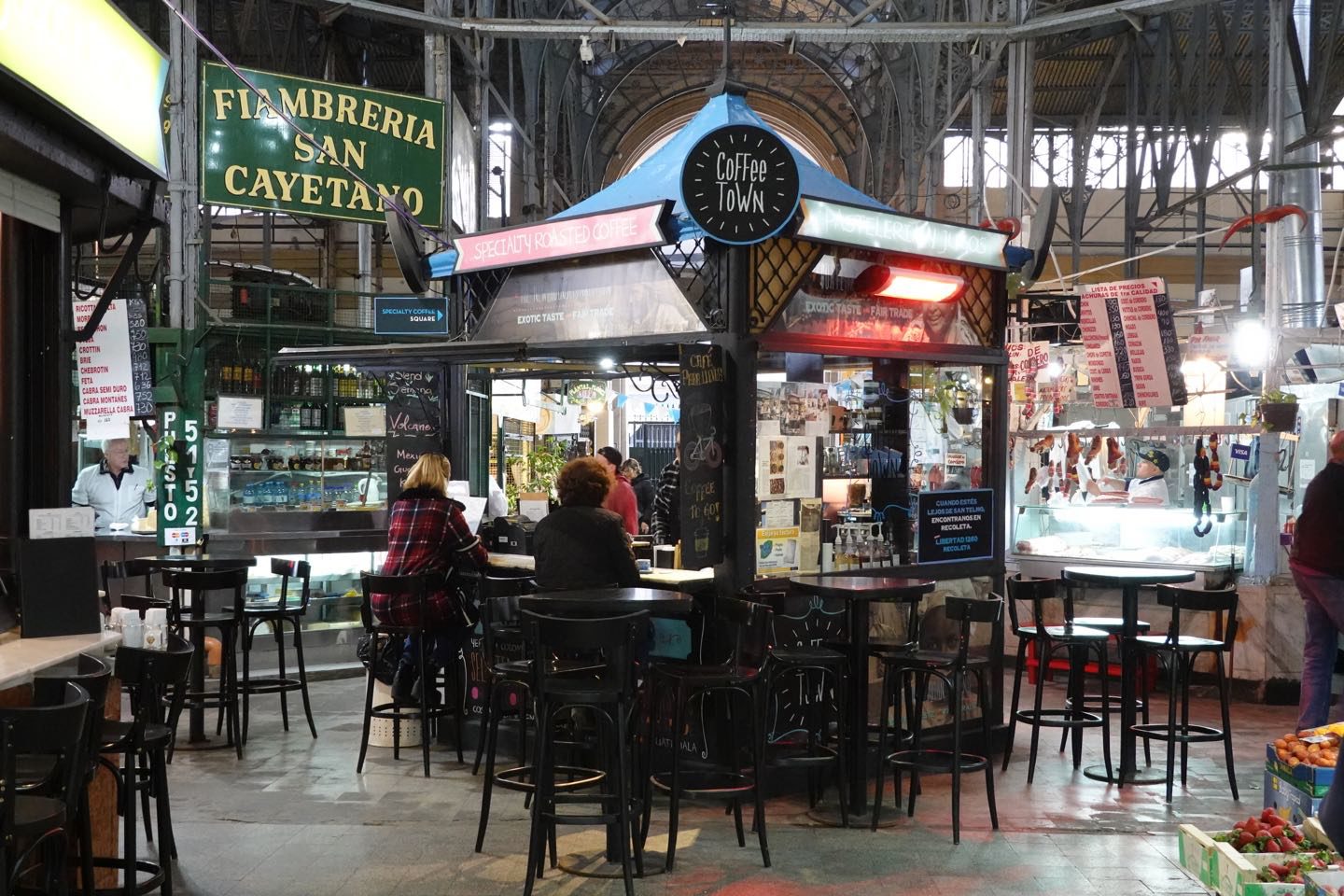

Food store 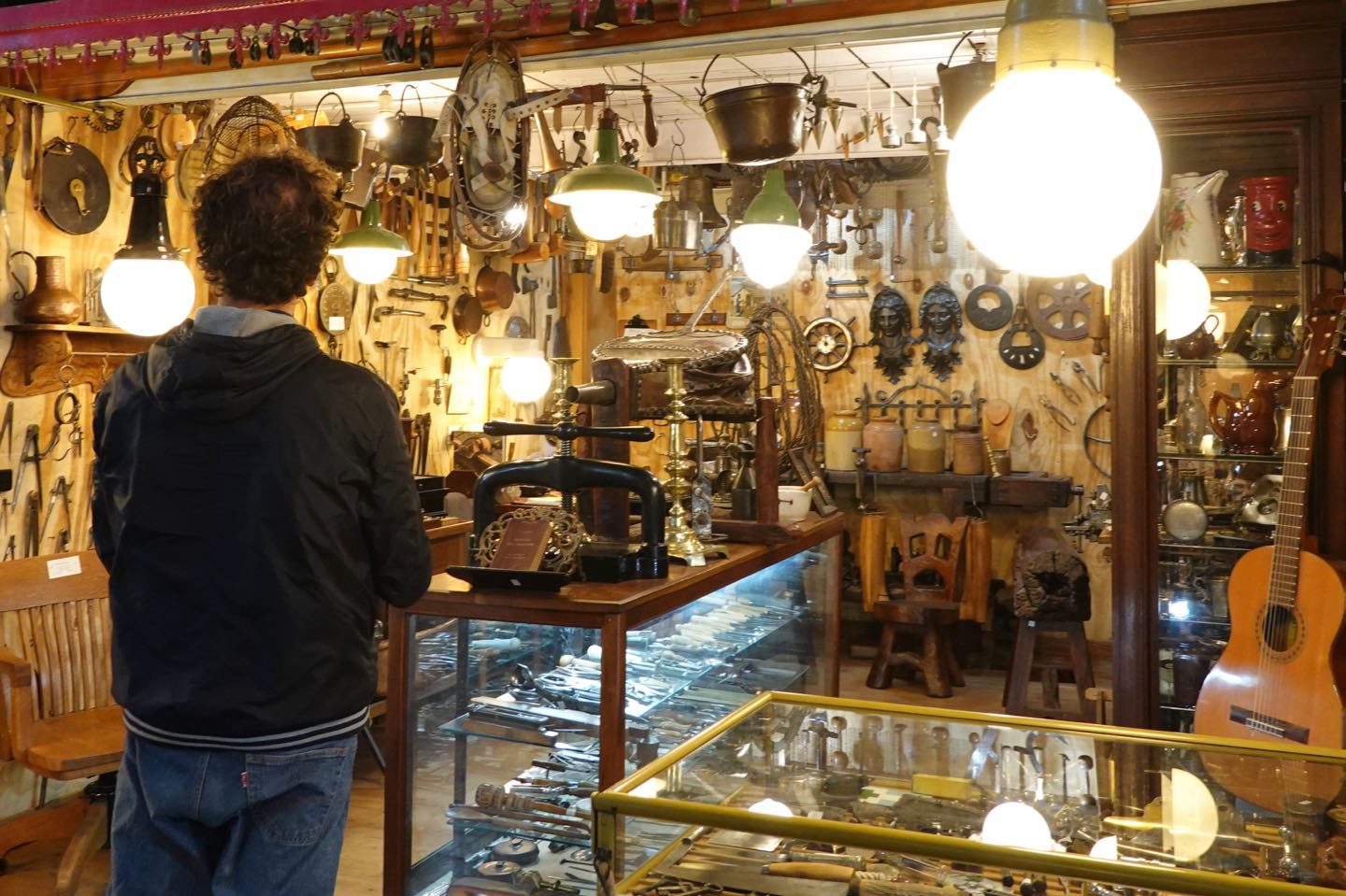
Antiques
Where to eat in San Telmo
- El Banco Rojo ($) local fast food -not a franchise-.
- La Brigada ($$) famous “parrilla” (grill).
- Bar Plaza Dorrego ($$) very famous, good option to have a coffee while listening to tango.
- The Gibraltar ($$) one of the best pubs to get some drinks at night.


Bar Plaza Dorrego 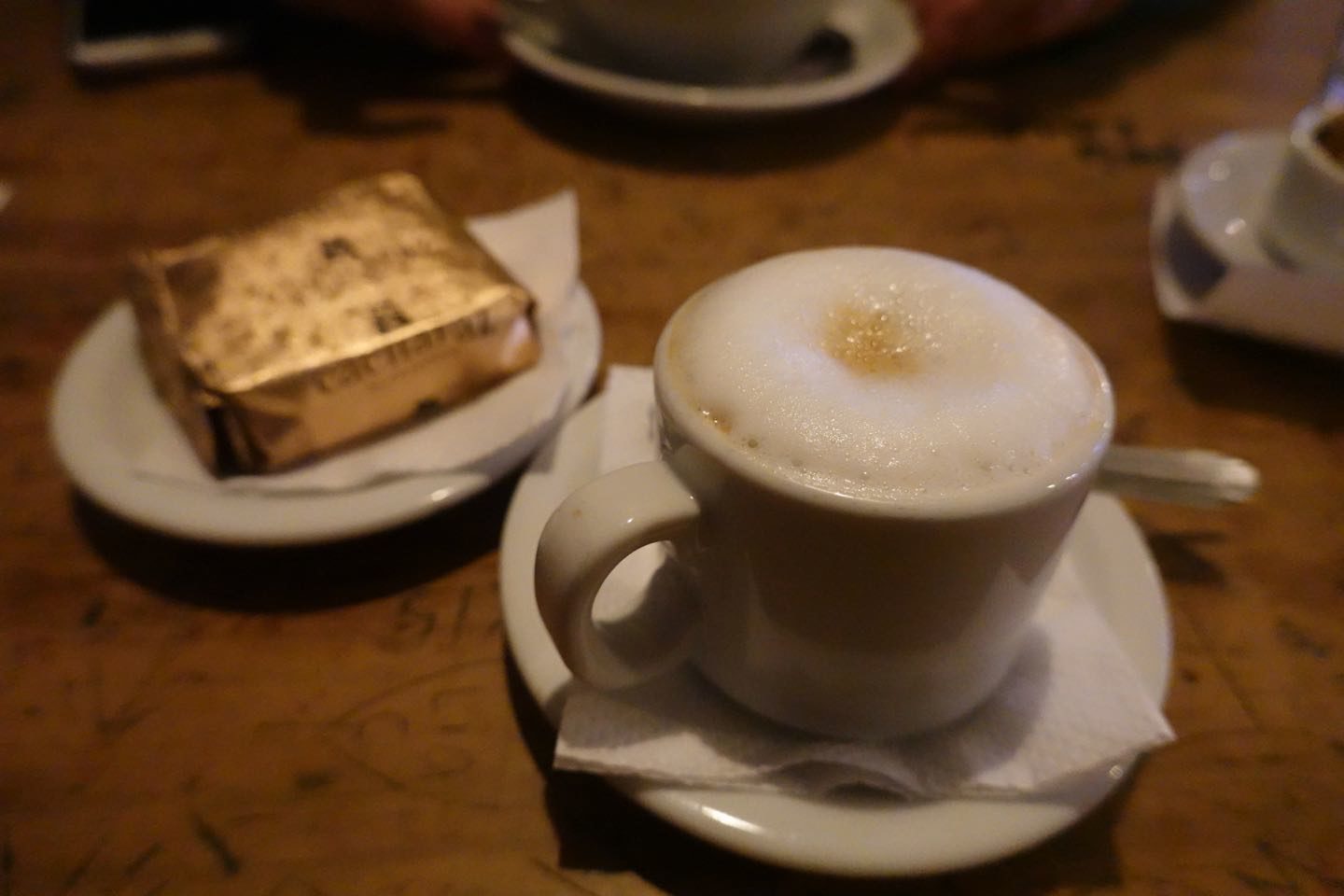
Coffee and “alfajor”
La Boca
La Boca is a low-middle class neighborhood with very little too see expect for the beautiful Caminito and the popular futbol stadium of Boca Juniors: La Bombonera. Besides this two attractions the rest of the area is dangerous to walk specially if you look like tourist holding phone and camera in hand. Better to get in and out of the tourist areas by bus or taxi.
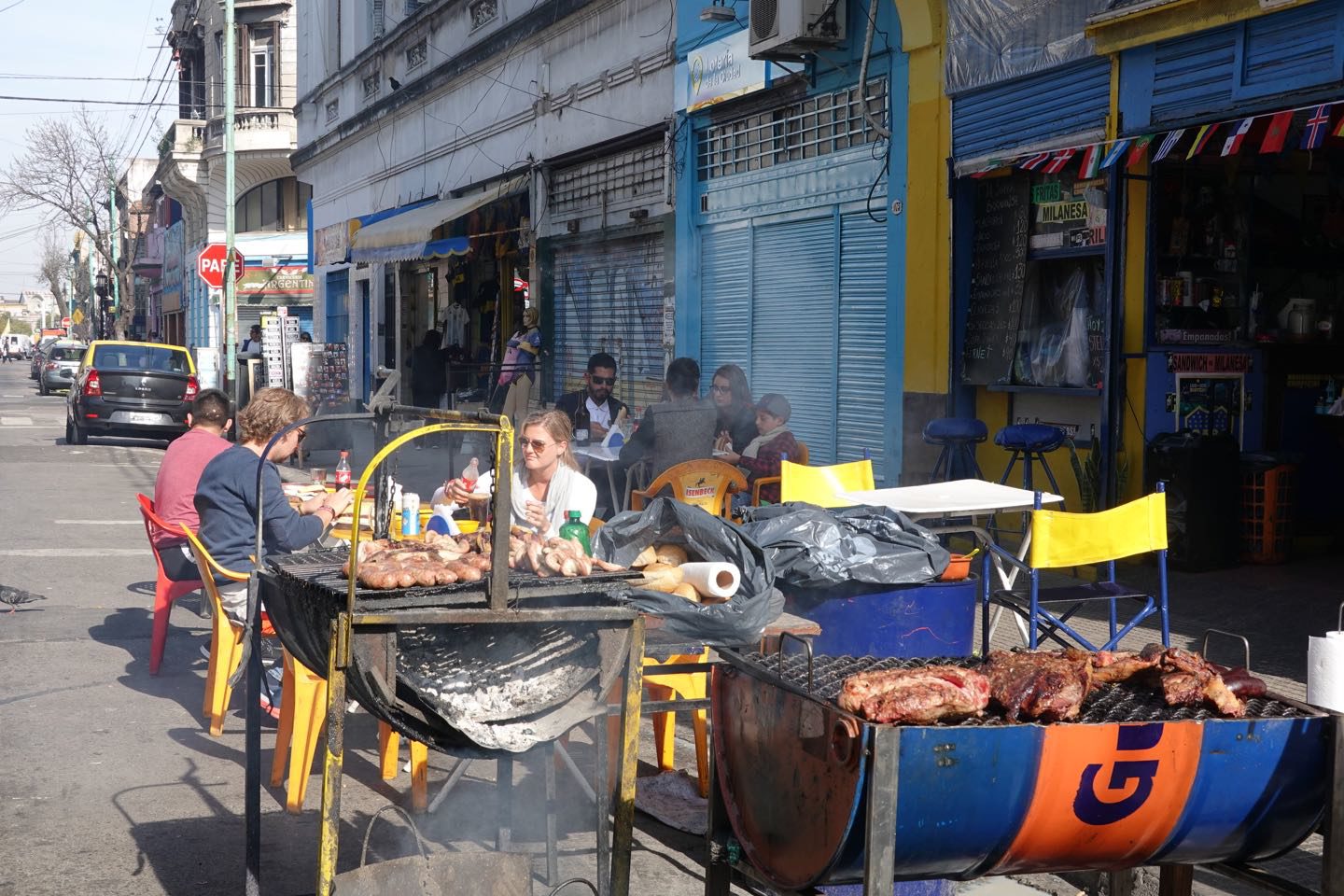
Caminito
Caminito is a small colorful area of La Boca near the river with a lot of history and its famous “conventillos”: traditional shared houses where immigrants rented a room and share the kitchen and toilet. These places became a massive mix of ethnics, cultures and languages that gave birth to amazing things like tango.
The main attraction here is the architecture, the lively colorful town full and the wooden plates houses completely unleveled. No doubt this is one of the best places to visit in the city.
The visit takes around one hour plus the common stop for eating. Is best to come in the afternoon when the sunlight is warmer making the colors more intense. Avoid weekends if possible to stay away from the tourist crowds.
Recommended route: the starting point is Plazoleta de los Suspiros where you see the touristic Magallanes Street to the left and Caminito Street to the right. Walk along the last one looking at the conventillos piling up then turn on Gral. Jose Garibaldi. Here take a look inside El Gran Paraíso a restaurant where you can also see the rooms of the conventillos where people used to lived. Very interesting, don’t miss it. There is no need to eat and it’s free to go check the place but if you wish you can try a “parrillada” -a mix of grilled beef, chorizo and blood sausage- on a lovely patio for those sunny days.
Lastly take Magallanes Street, to complete the circuit. This street is totally chaotic, filled with people dragging you to their bars and tango dancers in the middle of the noise of people walking by. Not very pleasant.
You can find many conventillos here to go inside but not to the rooms and many of these are fake, build for the tourist.
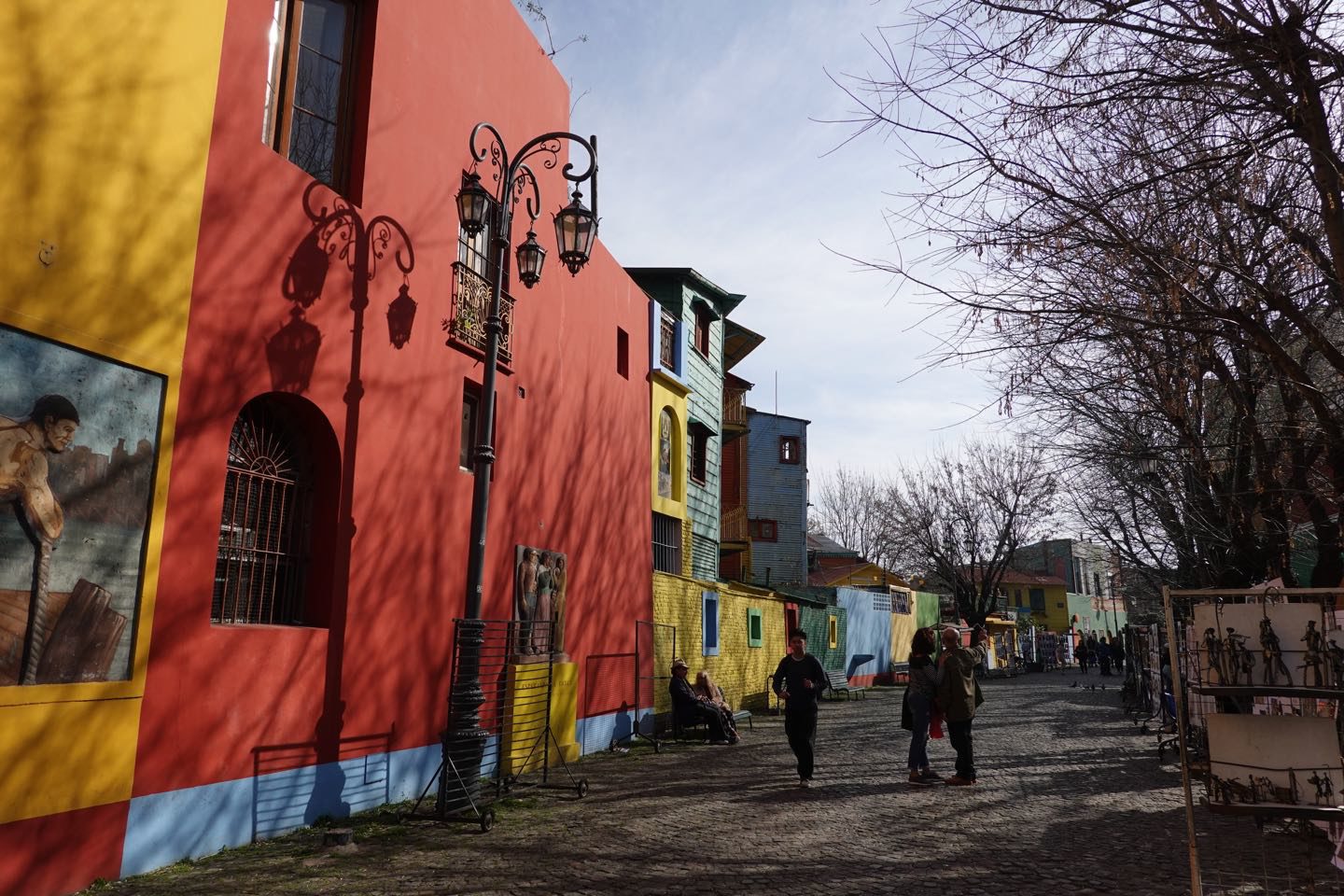
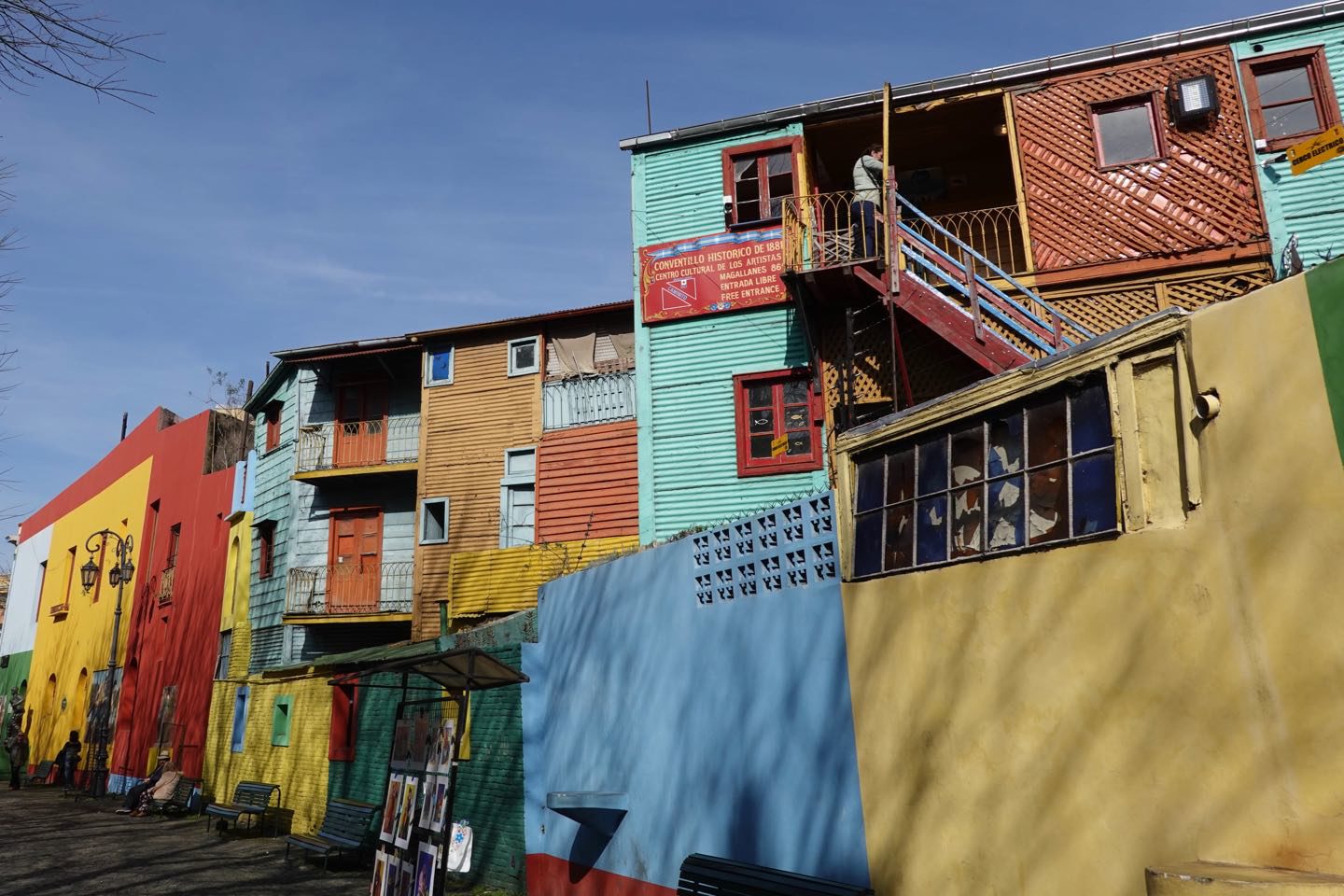

Inside the “conventillo” El Gran Paraiso 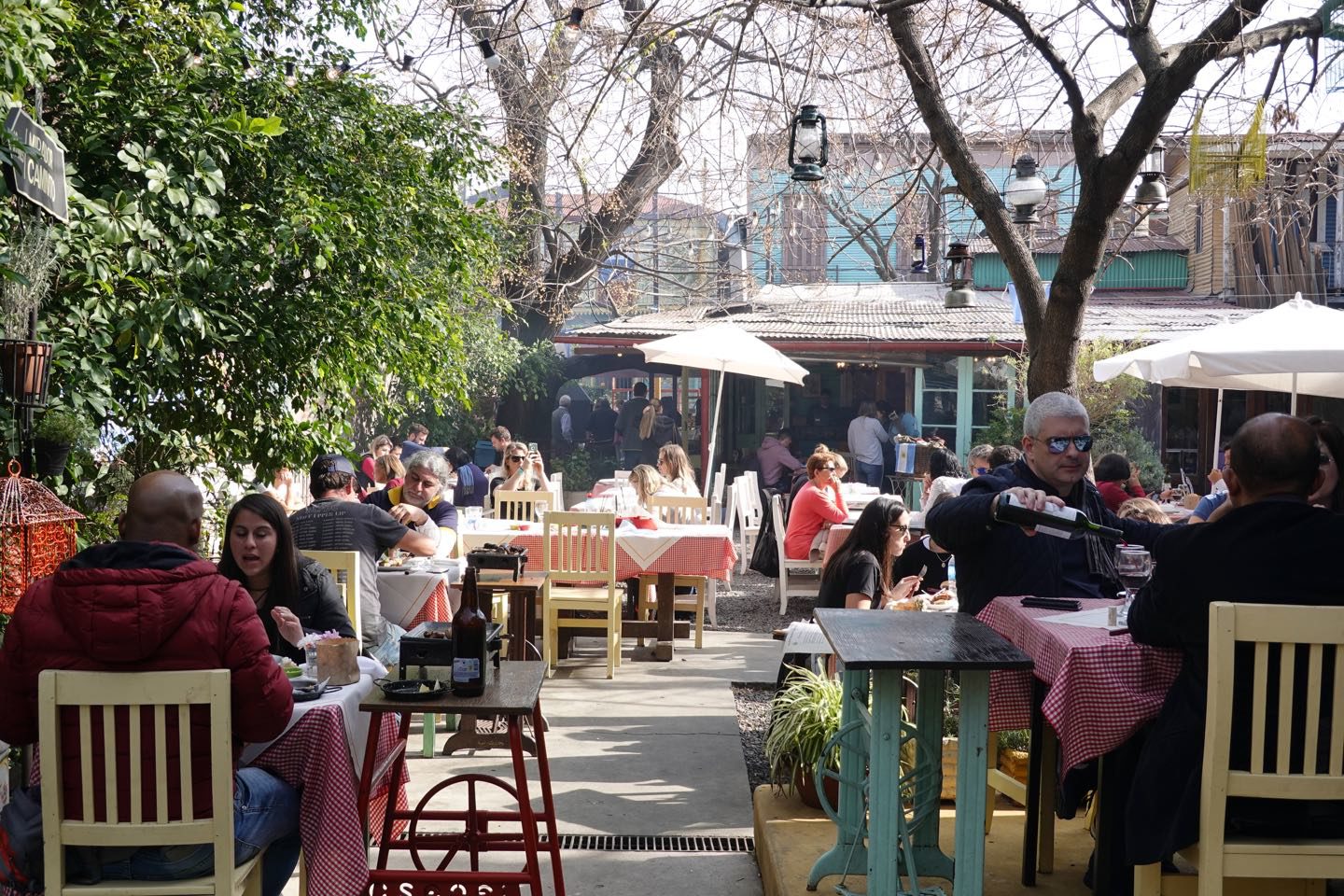
Restaurant El Gran Paraiso

Boca Juniors Stadium “La Bombonera”
La Bombonera is one of the most emblematic futbol stadiums in the world and its team: Boca Juniors, one of the most important of Argentina. The name in Spanish means “the chocolate box” because the shape of the stadium resembles one. Such sweet people Argentinians ^^ .
The place is only 400 meters from Caminito. Most people come to see the area around the entrance which is interesting, some others decide to go inside the stadium. My recommendation is come to the outside area if you have time but go inside only if you are a futbol fan, otherwise just don’t, it’s not so special.
There are tree types of tickets to visit the stadium. First one only to the Museo de la Pasion Boquense (museum of La Boca passion) which is totally not worth it. The second one adds up access to the grandstand (recommended) all self guided. Last one let you see the whole grandstand area and must be done in a guided tour.
Access: Brandsen Street corner Juan de Dios Filiberto.
Entry fee: 6 | 7 | 8 USD.
Type of visit: self guided and guided.
Duration: 30-60 minutes.
Opening hours: everyday from 10 to 18 hours.
Website: http://www.museoboquense.com

La Bombonera 
Inside the stadium
Where to eat in La Boca
- El Gran Paraiso ($$) a good option in the tourist area of Caminito. Open air patio, parrilla. Probably the best in Caminito.
- El Obrero ($) a real “bodegon” -traditional argentinian restaurant- with prices accesible for everyone. Quality is similar to the luxury restaurant, decor is typical from this kind of places and very attractive, waiters give squeeze between chairs to reach other tables and even give you the plate so you can pass to the guy in the corner, very chaotic but nice vibes. This place is hidden in La Boca in an area nobody visit. Their tables are always full with people from the neighborhood who come to eat with friends on their day to day routine and some lucky tourist that got the tip of this place. This kind of places don’t do publicity and the only way to learn about it is from people to people and that is how important people such as Maradona, Susan Sarandon, Bono from U2, Manu Chao, Rover Duvall, Francis Ford Coppola and many other ended up here. Food is excellent, I loved the grilled beef and pasta. If you come by taxi ask the driver to drop you off at the Usina del Arte. Don’t walk at night on this area. Daytime is safer, have lunch then head to La Bombonera and Caminito.
[Opening hours: Monday to Saturday 12-16.30hr – 20-02hr.]
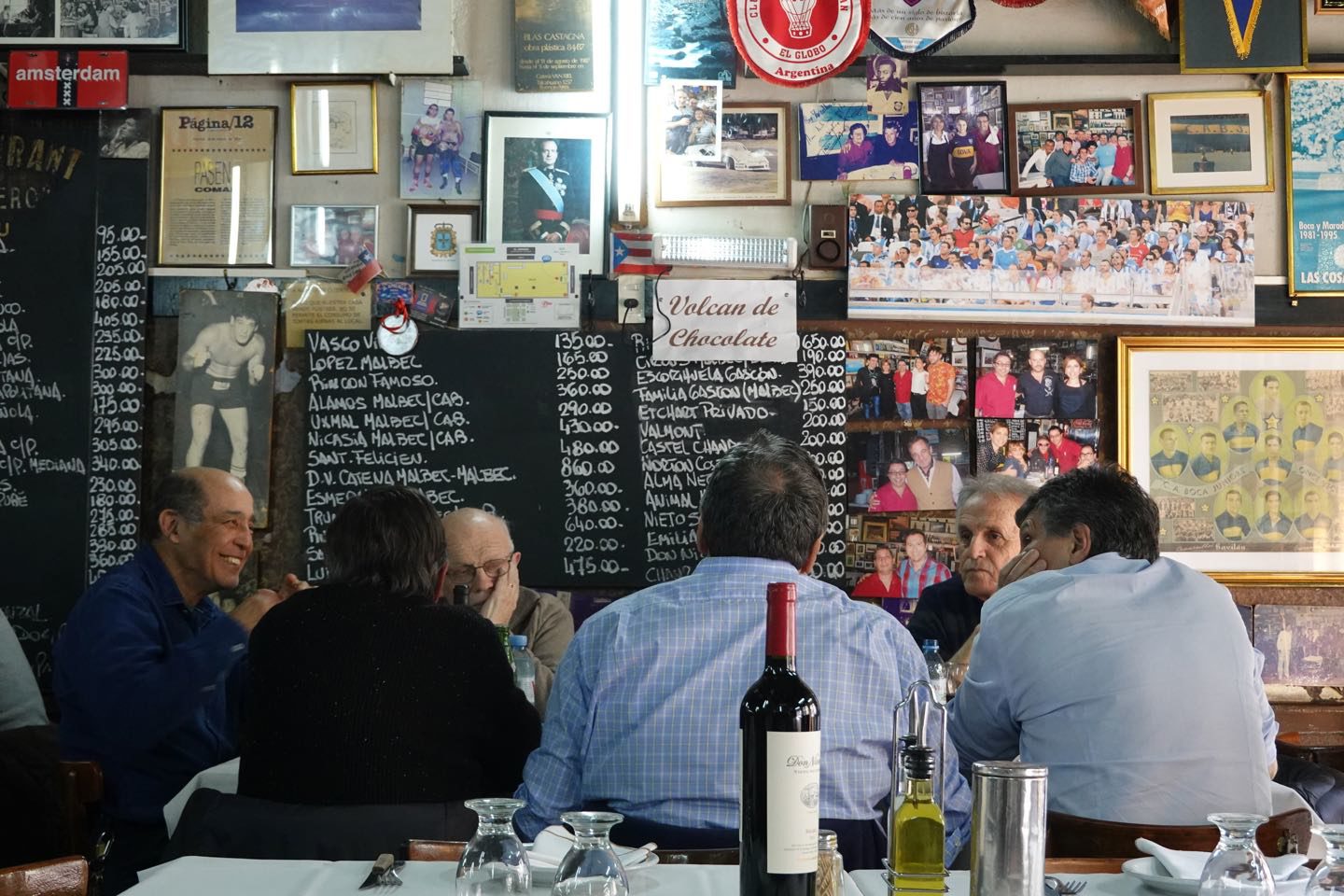
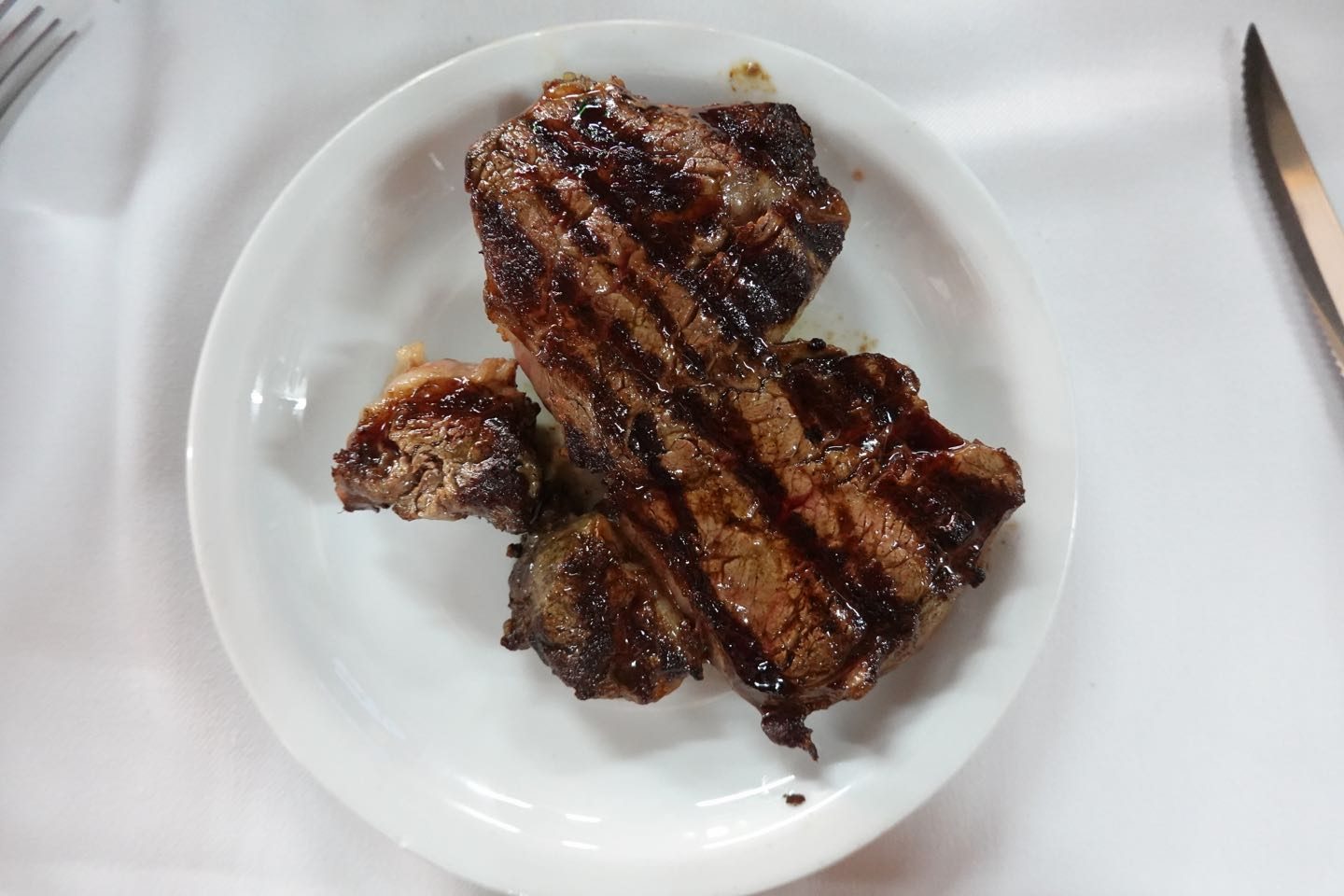
Palermo
Palermo is a big neighbourhood famous for its countless pubs, restaurant and fashion stores as well as some big parks. The area can be split into:
- Palermo Soho: pubs, bars, restaurants and fashion shops to come anytime of the day.
- Palermo Hollywood: pubs, nightlife..
- Las Cañitas: restaurant area more quiet and intimate than the previous two.
- Palermo Vivo: parks area.
Palermo Soho
Area around Plaza Serrano (Plazoleta Julio Cortazar on Google Maps).
Palermo Soho is famous for its bars and fashion shops from nice brands as well as their cheaper competition which in order to survive the brutal prices on rent they came up with the idea of selling clothing on daytime and drinks at night and in some cases both at the same time. This is a place where young people, adult and families come to have a meal and drinks. It is pretty in the afternoon but best visit in the evening and stay for dinner. This is the must-see area of Palermo.
Recommended to come Thursday to Saturday, the rest of the week is a little too quiet, specially at night.
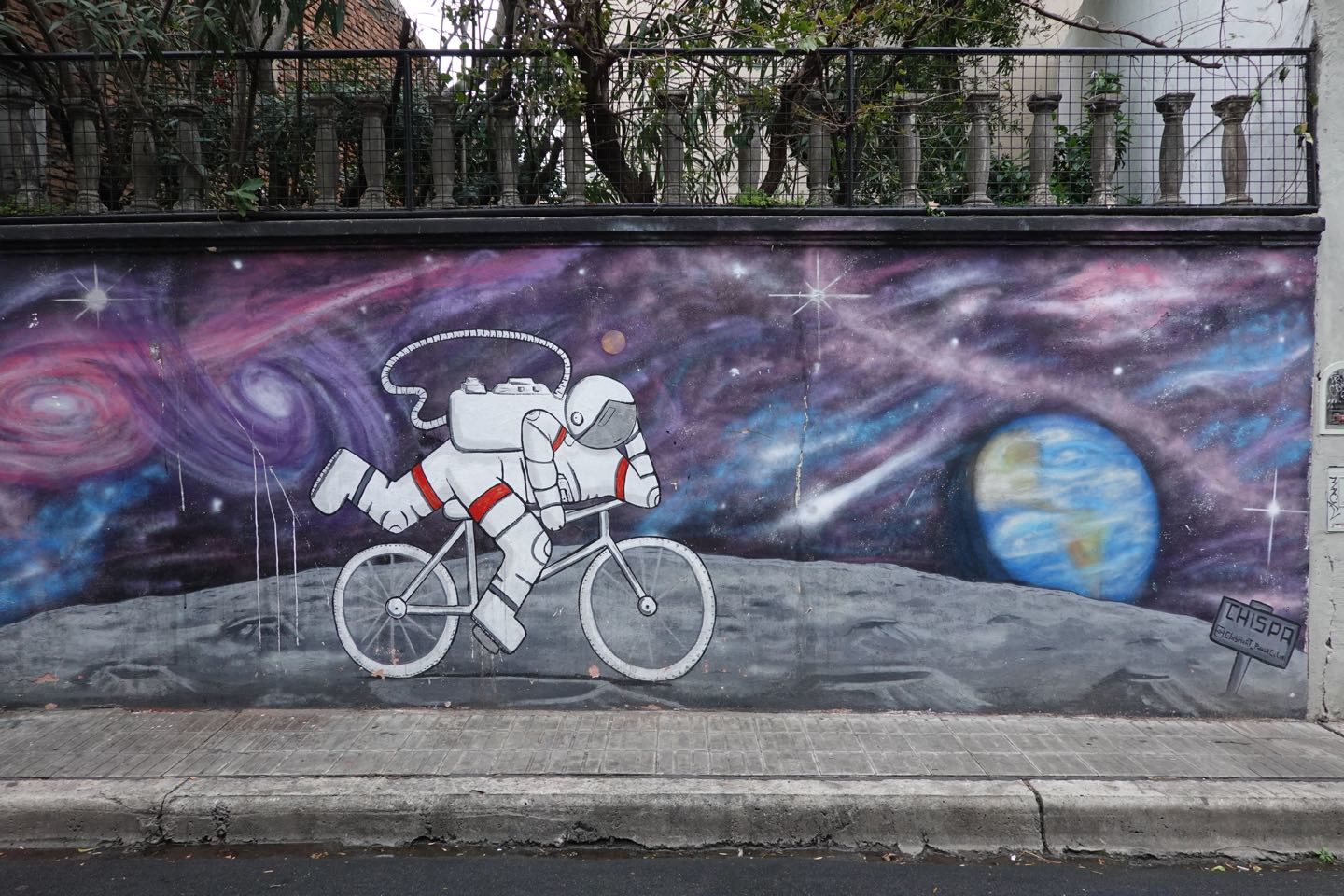
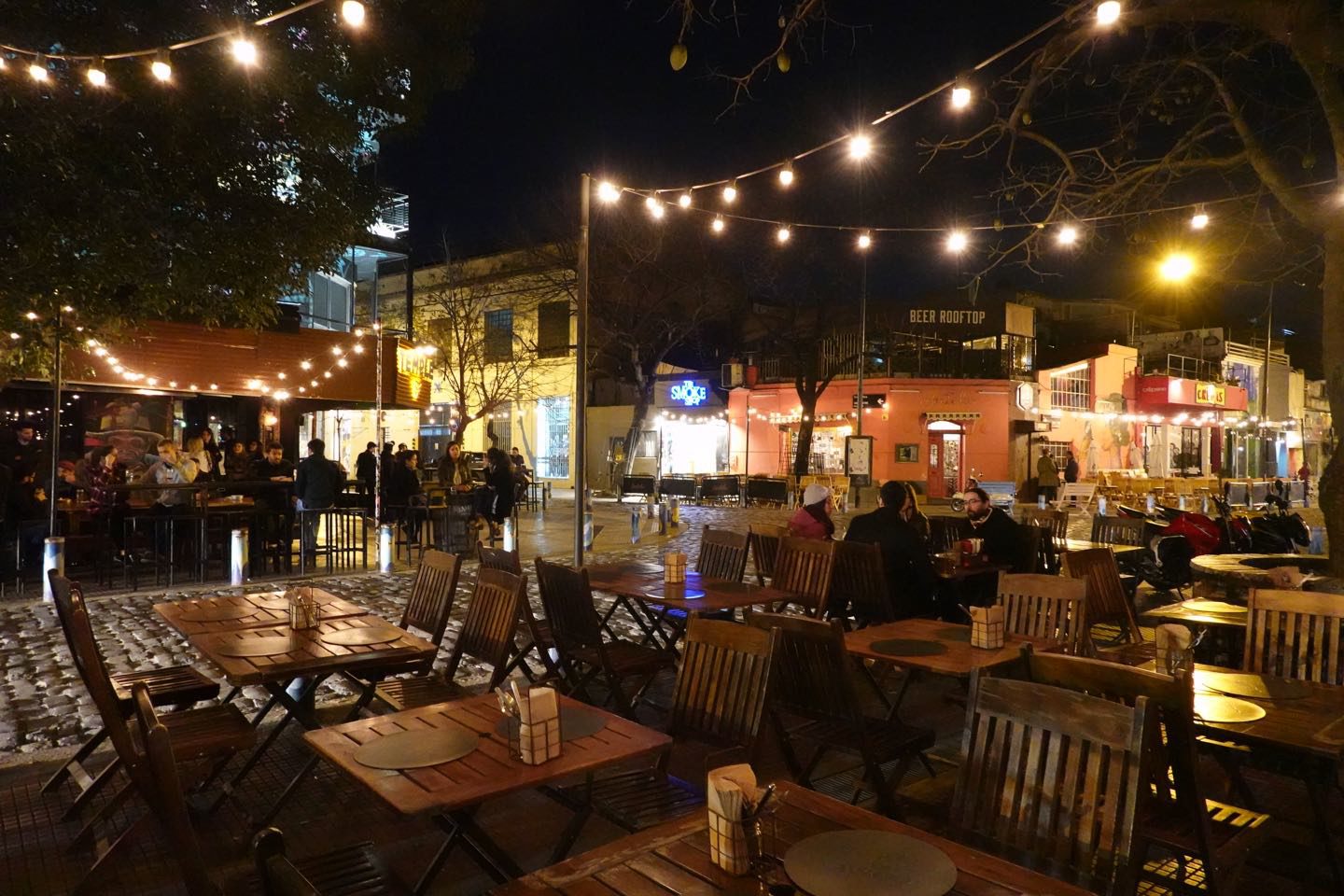
Where to eat in Palermo Soho
Palermo Soho has two of the best parrillas in town. Ideal to try the famous Argentinian grilled beef. These two parrillas are the only places you will find completely crowded even on weekdays.
- Parrilla Don Julio ($$$) the best no doubt. Beautiful place with a very pleasant local style decor, excelente quality and you can see how they prepare your beef from the tables near the entrance.
- La Cabrera ($$$) it fights for the first position against the previous one but this one doesn’t look like a parrilla, it looks more like a restaurant in almost every aspect. The treat from the waiters and the style feels you are in a different kind of place. It is nice but nothing special.
- Burger Joint: is the place to come if you are into gourmet burgers, tasty and the place looks very nice also.

Parrilla Don Julio 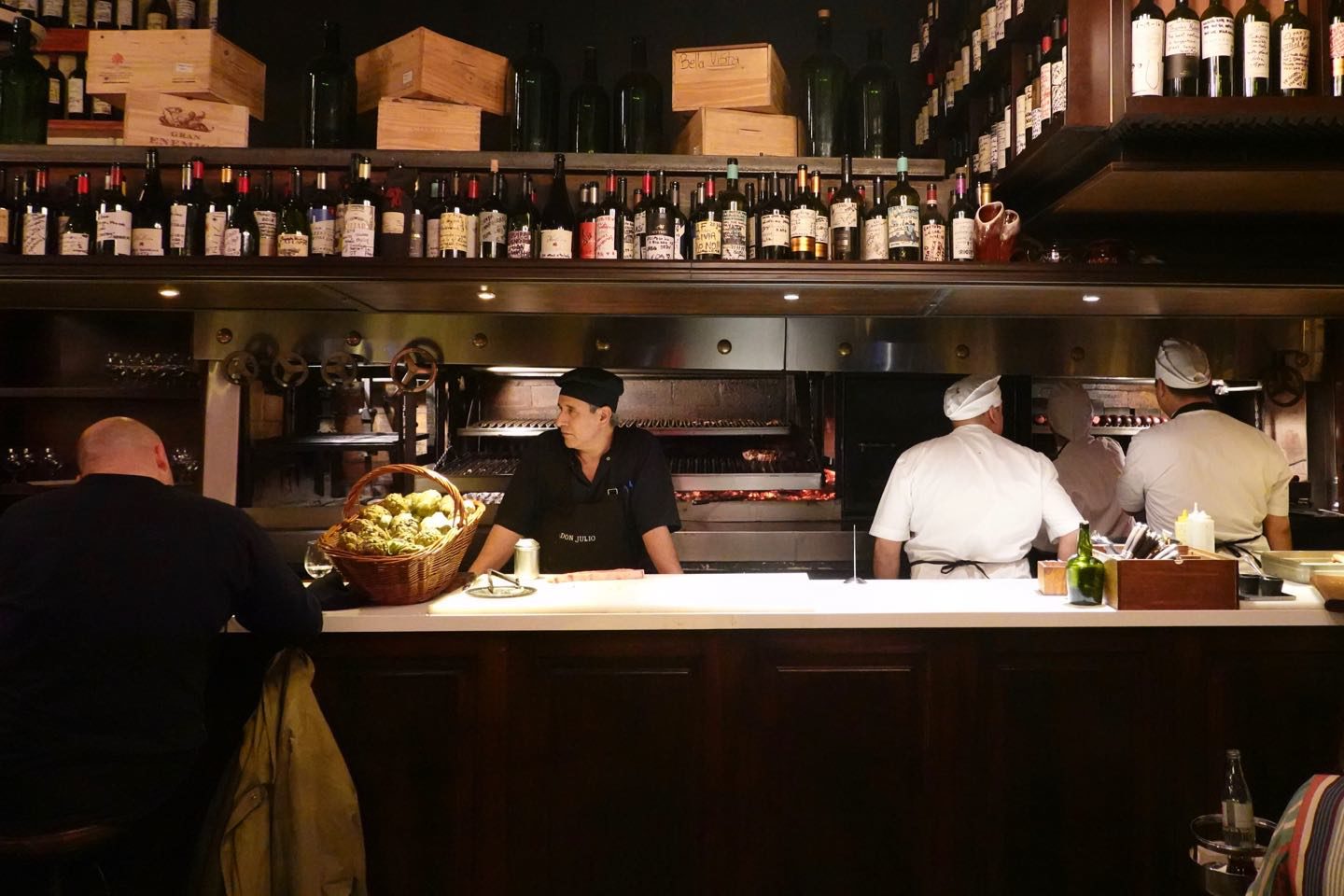
The kitchen
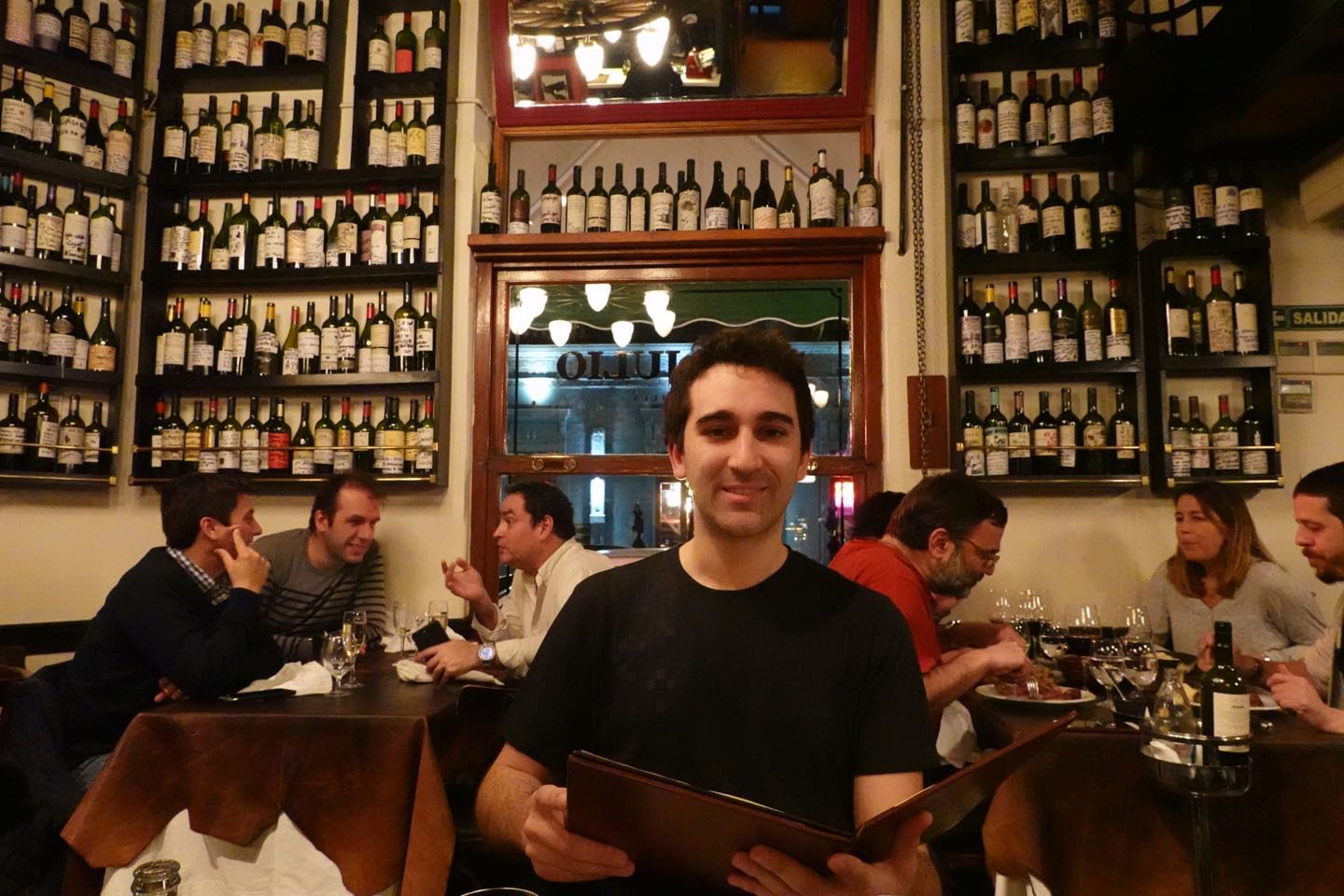
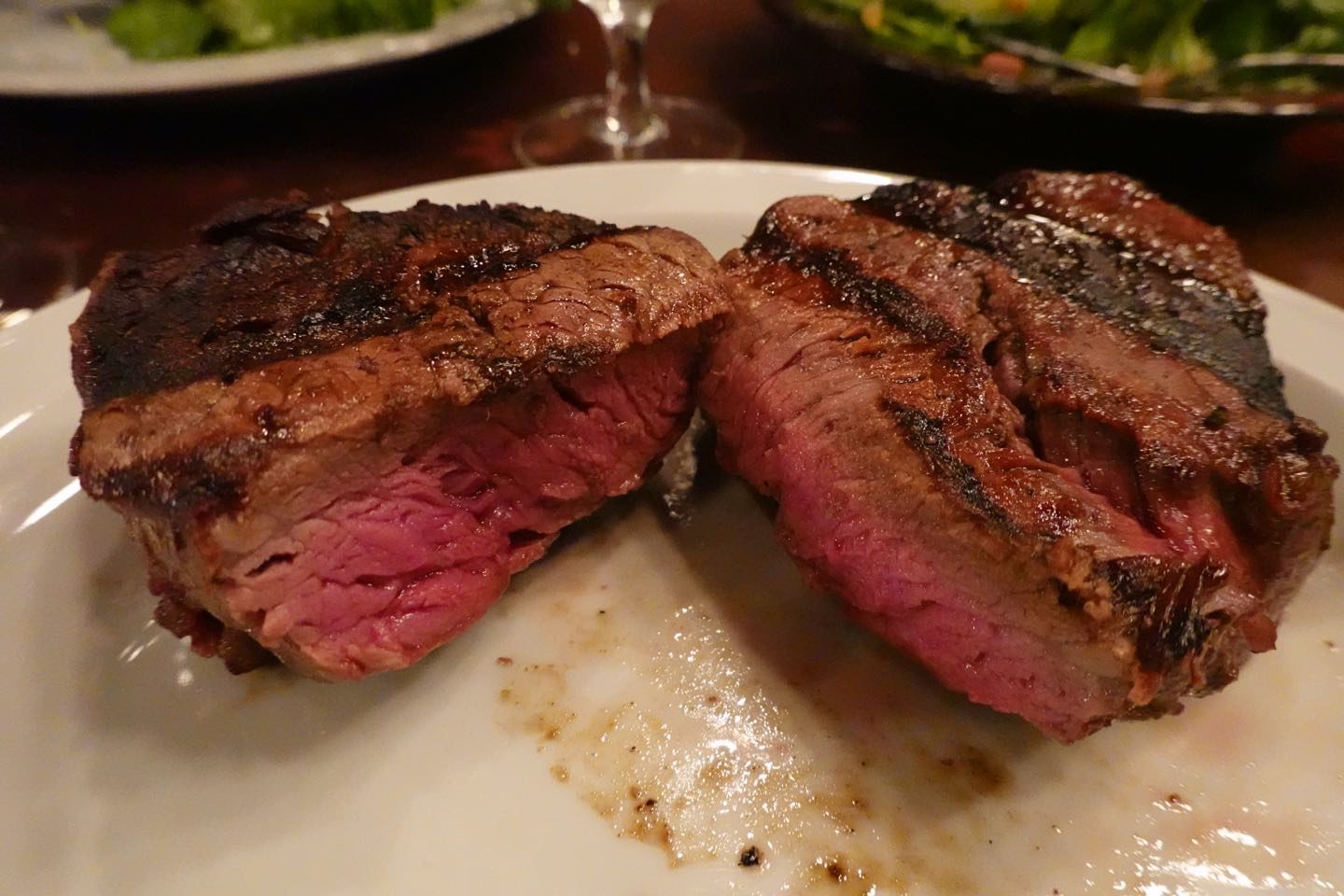
Palermo Hollywood
From Plaza Serrano crossing to the other side of Juan Bautista Justo Avenue.
Palermo Hollywood is focus on pubs where people came mainly for drinking with an extra touch of party mood. Come only at night from Thursday to Saturday.
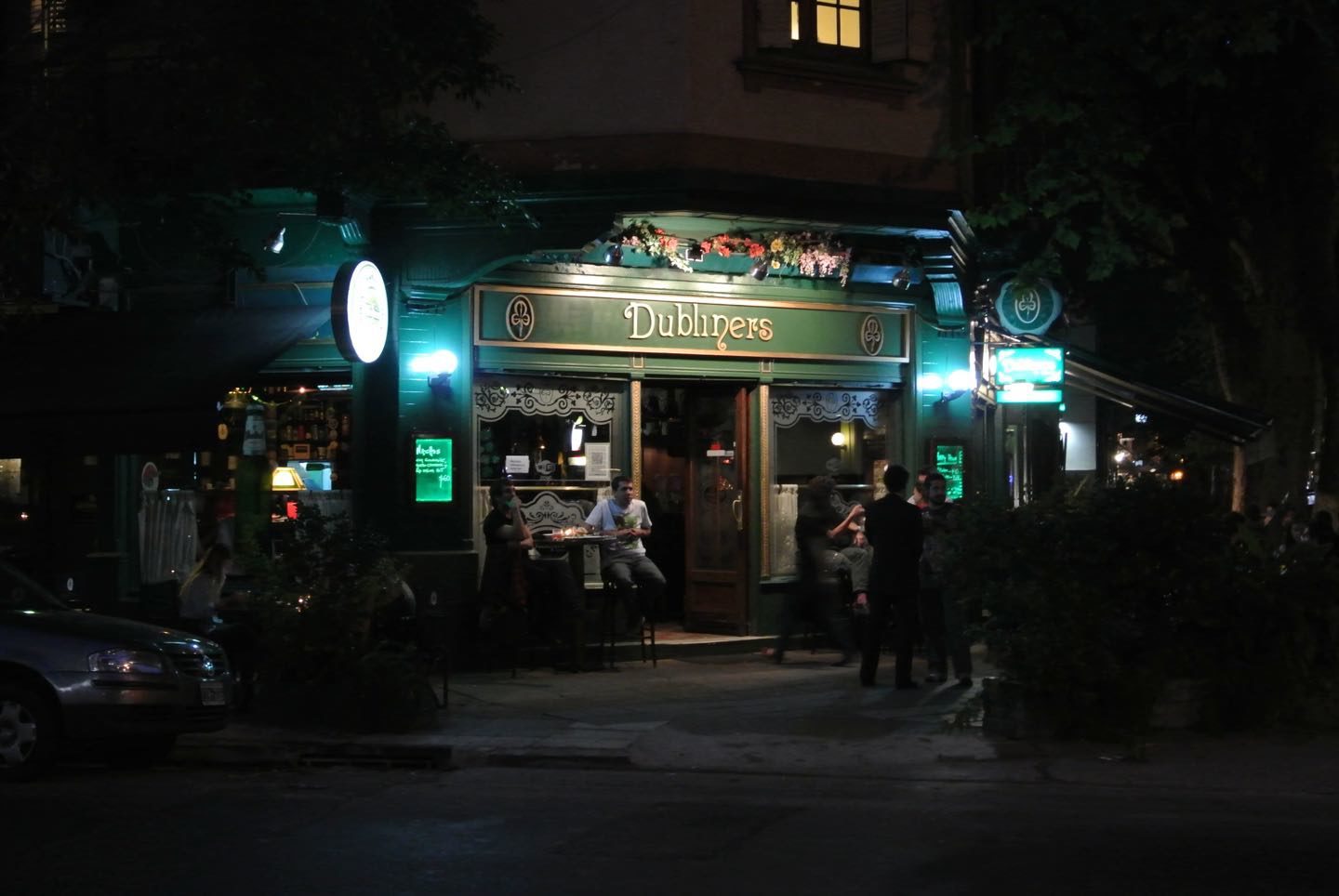
Palermo Hollywood 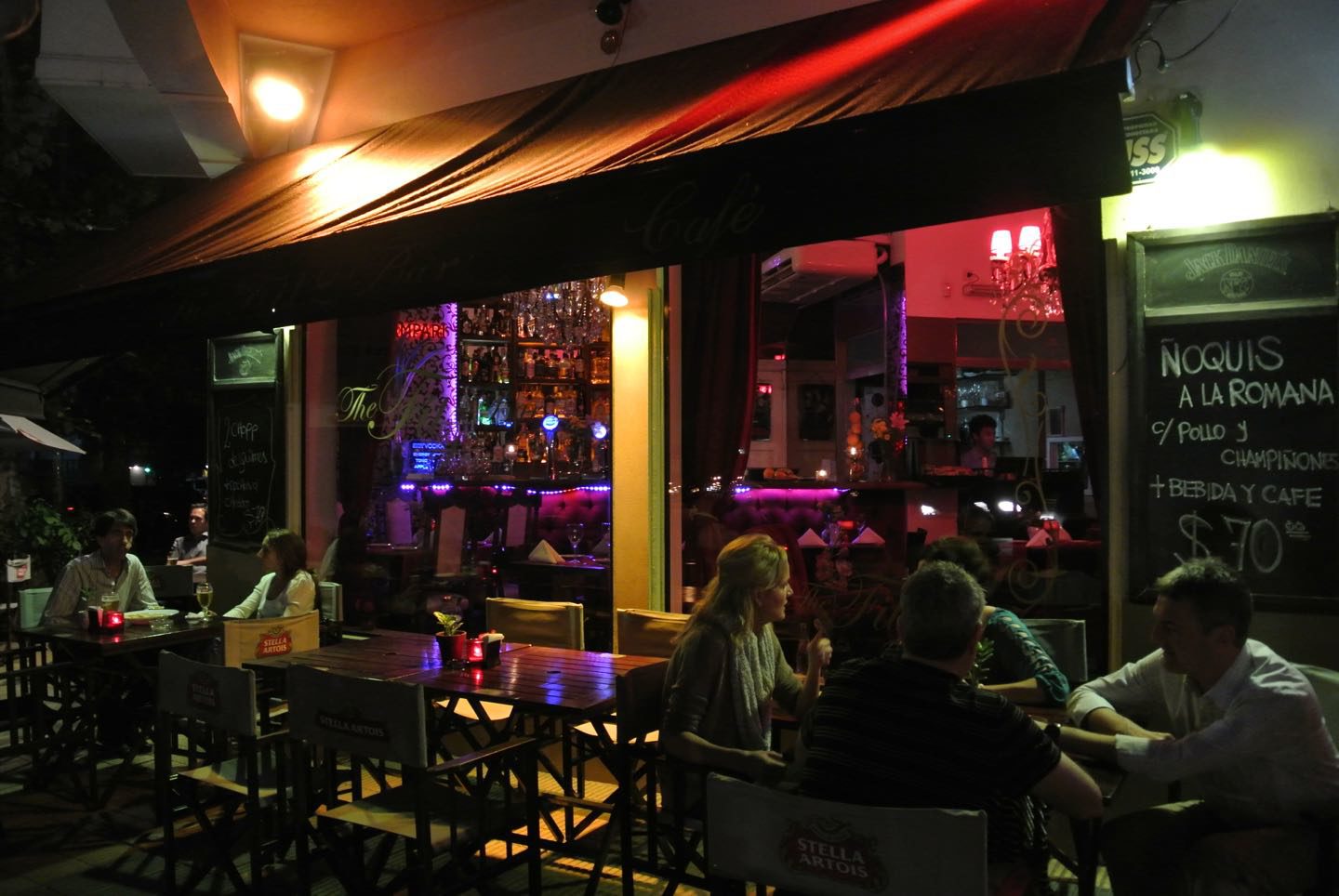
Palermo Hollywood
Las Cañitas
Northeast side of Luis María Campos Avenue.
Las Cañitas is another nice area with bars and restaurants but not so popular as the previous onces. The places has a tranquil and intimate vibe, great for dinner specially for couples.
Palermo Vivo
Palermo Vivo -Palermo Alive- is the area of Palermo where the parks are. It’s pretty but mainly for the people who live in the city and need some green to breath. Tourist will not find it very special. I recommend skipping it or visiting it last if you stay 4+ days in the city.
Plaza Italia is a small square. You will get off the metro here on the way to Plaza Serrano. Nearby is the Museo Evita (mix museo-bar-restarant).
The Eco Parque is a project to turn the zoo of Buenos Aires into a park only with local fauna not in cages (preserving the habitat of how it was before the urbanization) plus an area for environmental education. The park will remain closed until 2019 when one section will open, the rest will wait until 2023.
Bosques de Palermo -Palermo Forests- is the most pretty of the parks. It has an artificial lake, trees, palms and birds. Nearby is Planetario Galileo Galilei which nobody visit. The park where it’s located is not very interesting but here it takes place the “pillow fight” where thousands of people come to hit each other every year. Few meters away is the lovely Jardin Japones -Japanese Garden- one of the few in all South America, idea for tourist from the region -entry fee: 3 USD-.
MALBA -Latin American Art Museum of Buenos Aires- has regular art exhibition otherwise don’t even walk outside of the dull building.
Museo de Arte Decorativo -Decorative Art Museum- near Plaza Francia is basically a European style mansion.
Transportation
First thing you need to do in town is getting a “sube” card -1.50 USD- which is used to pay for the bus and subte (metro). Ask how much is the current price of the ticket and add enough funds to the card. The price of the any ride is around 0.30 USD.
This card can be found in metro stations, phone calling shops and few kiosks. You can use the same card for more than one person.
The metro (locally referred as “subte” subway) is easy to use but very crowded and sometimes it requires to walk 10 blocks.
Buses are excellent, it connect any point in the city without having to walk much and they run all night long non stop. When passengers get onto the bus they tell the driver where they are going so he can set the price on the machine, the difference is almost nothing so don’t worry to much about this, just tell the name of the neighborhood you are going to and wait a second.
Moovit is a good app to check how to get from one point to another using public transportation. It works better than Google Maps and it’s also available for other cities in Argentina unlike Google.
Taxis are very convenient and not always expensive. From downtown to nearby places (3km) is about 4 USD. Palermo is among the furthest touristic areas and is still acceptable price but have in mind the taxis has special fair at night (10pm to 6am) when prices sky rocket.
Ex. Palermo Soho to downtown (Obelisco, 6km) late night is about 15 USD.
Warning: is common to hear about taxi drivers taking tourist through longer routes to charge them more. Taxis use taximeter to calculate the fair based on distance and time on board.
Uber works in Buenos Aires but is not fully legal. Easy Taxi is an app to request a normal taxi to your location although is usually not necessary in touristic areas.

Subte (metro) 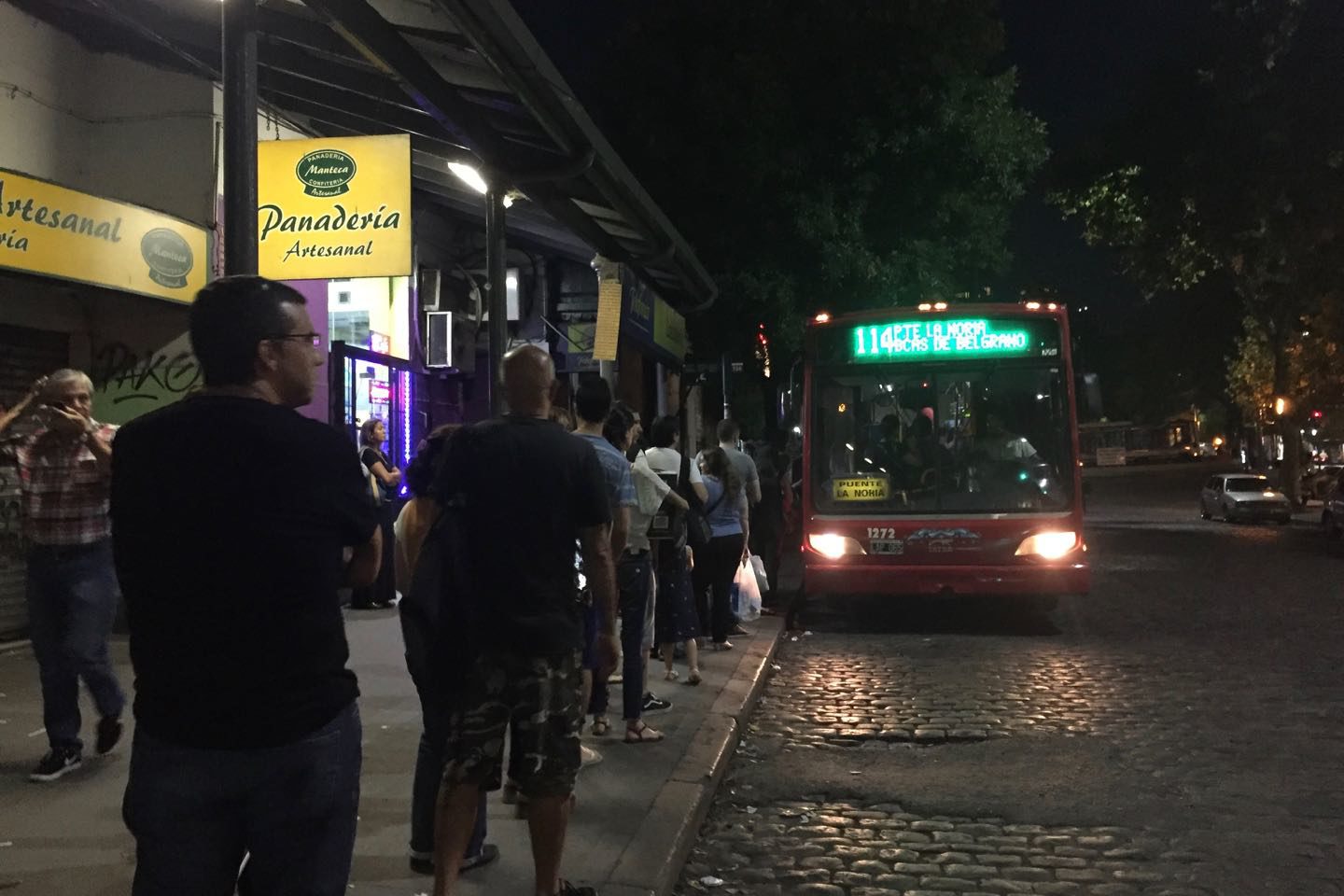
Colectivo (bus)
